State eyes investing $150M to produce insulin
Bill would allow partnership with private rm to reduce drug costs
By Mark Sanchez
Bill would allow partnership with private rm to reduce drug costs
By Mark Sanchez By Kate Carlson
By Kate Carlson
A 12,000-capacity amphitheater planned along the Grand River in downtown Grand Rapids is slated for a spring 2024 groundbreaking that would conclude by the 2026 season.

Until then, a local entertainment authority, the city of Grand
Rapids and amphitheater developer Grand Action 2.0 are navigating several moving parts that include property sales and a phased relocation of city services o the project site at 201 Market Ave. SW. As that occurs, construction crews will begin preliminary work on the outdoor amphitheater that’s expected to
drive additional mixed-use, riverfront development.
“I don’t see an obstacle that would keep (the amphitheater project) from happening,” Grand Rapids Deputy City Manager Kate Berens said. “We have all the things in place we need to map this out and execute the plan. Both (the relocation and amphitheater) projects are going through their permitting and
bidding work, and we’re pushing both projects forward in parallel.”
e city-owned Market Avenue property currently houses a range of city services, including public works, parks and recreation, forestry, and eet and facilities management. Some of these services will stay on the
Insulin could become the next product produced in Michigan if lawmakers enact legislation that would allow the state to form a public-private partnership and o er $150 million in grant funding to support a new production facility.
State Rep. Curtis VanderWall, R-Ludington, recently introduced House Bill 4890 to spur the production in Michigan of a low-cost generic insulin that people with diabetes could buy for between $30 to $50 for a month’s supply.
As written, H.B. 4890 would essentially implement an idea that Gov. Gretchen Whitmer oated in February in her budget proposal for the 2024 scal year that starts Oct.1. Whitmer rst suggested the concept last fall in an executive order.

Latino business owners around Grand Rapids are experiencing stagnant sales and an ongoing lack of access to capital, resources and government support, a group of small business owners told
state lawmakers.
For some, adopting services like e-commerce in order to compete can be a tall challenge.
“We need help. Not only economic help, but we need di erent resources to continue growing,” said Nancy Quero, who owns Wyoming-based Guelaguetza Designs LLC, which sells authentic handcrafted goods imported from Mexico. “In my case, there are things like e-commerce that are new things for many busi-
nesses that we’re trying to learn.” Quero was among roughly a dozen Latino business owners who participated in a roundtable discussion with Michigan Senate Majority Leader Winnie Brinks, D-Grand Rapids, and State Rep. John Fitzgerald, D-Wyoming, along with several other local leaders on Aug. 18 at the West Michigan Hispanic Chamber of Commerce.
Fox Motors adds second Grand Rapids-area Kia dealership
With more than 9 out of 10 west Michigan dentists participating with Delta Dental, finding a dentist is easy.
Committed to west Michigan. Committed to access. Committed to you.
Delta Dental of MichiganThe court-appointed receiver overseeing operations at Proos Manufacturing Inc. hopes to secure a buyer for the longstanding Grand Rapids-based company.
A Kent County Circuit Court judge in July appointed Cascade Partners LLC as the receiver for Proos Manufacturing after the material handling equipment producer defaulted on a $10.5 million loan that it secured in 2020 from First Merchants Bank.
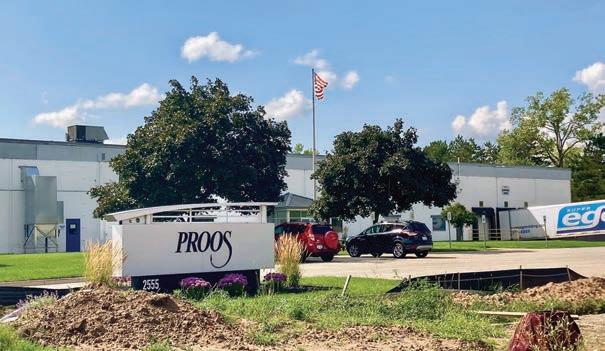
Court records indicate that Proos Manufacturing owed $7.6 million on the loan, plus $50,542 in unpaid interest, when First Merchants Bank filed the court case on July 14 requesting a receiver for the company. Judge Curt Benson appointed Cascade Partners as receiver four days later.
The 104-year-old Proos Manufacturing, which currently employs a workforce of 60 people, advised the Muncie, Ind.-based First Merchants Bank that it would consent to the appointment of a receiver,
according to court documents.
The company, which began in 1919 by producing casket hardware and cookie die stamps and at one point manufactured fishing downriggers, continues operating at its facility on Oak Industrial Drive NE in Grand Rapids, said Ronald Miller, managing director of the restructuring group at Cascade Partners’ Grand Rapids office.
“We are actively seeking potential buyers and we are talking with
A massive Reeds Lake mansion once owned by a disgraced doctor convicted of putting patients at risk and defrauding insurance companies has hit the market again, this time at an eye-popping price of $8.6 million.

The 14,177-square-foot, fivebed, 11-bath East Grand Rapids home built in 1926 was listed on Aug. 4. The current owner, who declined an interview and asked not to be named, is working with broker Robert Antonini at Coldwell Banker AJS-Schmidt in Grand Rapids Township to sell the home.
The property’s list price of $8.6 million is a record-high ask for a
Kent County home, at least in the approximately two decades of multiple listing service records available to Julie Rossio, a highend real estate broker with Keller Williams Grand Rapids East.
million.
The lavish mansion, which features a custom-designed Dale Chihuly light fixture in the foyer, had previously traded for $1.75 million in 2009 when its second most-recent owner bought it out of foreclosure from Fifth Third Bank, which had repossessed the home from former doctor and convicted felon Robert Stokes.
By Abby PoirierFrozen food producer Request Foods Inc. is scaling back plans for a $205 million expansion project in Holland Charter Township because of what the company is calling “unforeseen setbacks.”
Initial plans announced in October 2021 called for the company to invest $81 million to add 112,000 square feet to its production facility at 12875 Greenly St. to increase manufacturing capacity for family and bulk meal production. Request Foods also planned to invest $43 million into a new 145,000-squarefoot cold storage warehouse to store finished products and an 89,000-square-foot ready-to-eat (RTE) foods manufacturing facility.
The overall project also included $7 million in expansions and upgrades to Request Foods’ wastewater treatment facility.
“It broke its own previous record,” Rossio said, referring to the sale to the current owner, who bought the home in 2014 for $7.8
A Crain’s analysis shows the previous owner invested heavily in the home after buying it out of foreclosure, which led city assessors to bump the taxable value
from nearly $829,000 in 2012 to more than $1.3 million in 2013.
The taxable value as of 2022 was almost $1.9 million.
The listing describes the property as “meticulously maintained” and “move-in ready.” It features about 300 feet of frontage on allsports Reeds Lake, and “extraordinary views of the lake from every room,” per the listing.
The gated, nearly 2-acre property contains a fully finished luxury boathouse with a large waterfront deck, space for a boat launch, a fire pit, batting cage, four-stall
At the time, the company said it expected the overall $205 million investment to lead to the creation of approximately 200 new jobs in the Holland area.
Request Foods CFO Menaka Abel said the company has been forced to restructure the multi-year expansion project, however, because of a lack of available labor and changing consumer habits. It has filled only 100 of the 200 positions it committed to creating.
“People were stuck in the house for two years and they hoarded their freezers and refrigerators, but now people can go out. It’s what I would call a COVID exhale,” Abel said.
The DeWitt family-owned
$8.6M,
Labor shortage, changing market prompt new strategy
parcel also includes about 300 feet of frontage on the water |
By Rachel Watson
The listing describes the property as “meticulously maintained” and “move-in ready.”
Despite extreme weather and ongoing labor concerns, Michigan apple growers are on track for a harvest that could rival last year’s record.

According to new projections issued Aug. 18 by the Michigan Apple Commission, the state’s apple industry this year expects to harvest 32 million bushels of apples, or 1.344 billion pounds. That’s coming off a record harvest in 2022 when growers harvested 32.38 million bushels, or nearly 35% more than the average harvest of 24 million bushels.
According to West Michigan growers and industry groups, the combination of unusually warm weather and newly budded trees coming online has contributed to another exceptional harvest.
“Everybody in this area is pleased with what they’ve got,” said Phil Schwallier, owner of Schwallier’s Country Basket, an apple orchard and farm market located at M-37 and 9 Mile Road NW in Alpine Township.
In addition to moving his produce via the farm-based market, Schwallier sells apples through Riveridge Produce Marketing Inc., a Sparta Township-based produce marketing and processing company that distributes apples.
Schwallier credits a good irrigation system for keeping his apples hydrated during the early summer heat wave and drought-like condi-
tions. He estimates his harvest will be approximately 60,000 bushels, an “above average” haul for his 80acre apple orchard, which is located in West Michigan’s so-called Fruit Ridge.
The orchard-rich area spans 20 miles in Kent, Newaygo, Muskegon and Ottawa counties and features a temperate climate and soil composition ideal for growing fruit.
Schwallier’s Country Basket is one of roughly 775 family-run farms that grow apples in the state, according to the Michigan Apple Commission. The state’s growers maintain more than 14.9 million apple trees in commercial production with a footprint of more than 34,500 acres.
“(O)verall our state’s growers report a very healthy crop with great looking fruit,” said Diane Smith, executive director of the Michigan Apple Committee.
According to Smith, the sunny spring weather followed by a “slow warmup” helped drive good pollination this year, while extreme weather patterns and hail damage tended to be localized, sparing most areas of the state.
While weather has played a contributing factor in this fall’s positive harvest outlook, Smith said the industry will also benefit from yield related to recent plantings maturing across the state.
“We had a lot of young trees and you’re never quite sure when they’re going to hit,” she said. “Last year, they just really all hit. We had a lot of production coming off those young trees that wasn’t there the year before. So that played into (last year’s harvest) quite a bit and it’s definitely played into this year
as well with having another larger crop than we would normally have.”
However, the bump in production comes as many fruit growers continue to face a strained labor force, particularly for the many Michigan fruit growers who employ agricultural workers on temporary H-2A visas to work their farms.
For 2023, the U.S. Department of Labor raised the minimum hourly cost of H-2A labor by 12.8% in Michigan, bringing the hourly wage for migrant farmworkers from $15.37 to $17.34. While hourly wages for temporary agricultural workers have fluctuated in the past, farmers have seen a 32% increase over the last five years, leading to concerns about the long-term profitability of using H2-A workers.
Apples are Michigan’s most significant crops, with an annual harvest valued at around $900 million, according to the Michigan Ag Council. Michigan harvests
around 1.05 billion apples every year. Because apples are easily damaged in harvest, most farmers opt to pick them by hand, rather than using automation.
“Labor’s our No. 1 issue always, and making sure that we have skilled labor is always something that we’re constantly nervous about,” Smith said. “It’s not a lack of (farmers) wanting to pay a living wage. It’s (that) the amount of increase isn’t sustainable. We’re not growing a widget. It can’t wait to be harvested; it’s got to be harvested at a correct time. Getting labor here, on time, is always critical for our growers.”
Air quality issues are also a rising concern for farmers in general, particularly as wildfire smoke from Canada continues to affect wide swaths of the United States, including West Michigan.
In June, Michigan’s air quality registered among the worst in the country, ranging from “very unhealthy” to “hazardous” as smoke from ongoing Canadian wildfires
crossed the state, prompting cancellations of outdoor events in the Grand Rapids area.
While air quality conditions have improved since then, Michigan’s apple farmers remain wary of airborne pollutants affecting the health of farm workers during harvest.
“Because it is such a labor-intensive crop — all hand-picked — it’s going to require workers to be out in the orchards harvesting this fall,” Smith said. “The apples will be fine, it’s more of a concern on the side of workers and making sure that they’re safe and protected.”
According to the U.S. Centers for Disease Control and Prevention, the understanding of the effects of wildfire smoke on outdoor workers, including farm laborers, remains limited as researchers begin collecting data on the emerging concern.
Working in smoky outdoor conditions can cause eye irritation, a sore throat or cough, as well as bronchitis or pneumonia, according to the CDC, which notes the conditions can also exacerbate asthma and chronic obstructive pulmonary disease and lead to “adverse birth outcomes.”
“Respirators, such as an N95, may be one of the easiest controls to implement for limiting a worker’s exposure to the particulate matter in wildland smoke, and in some cases may be the only option to protect some workers,” according to guidance from the CDC.
While California, Oregon and Washington have started to adopt workplace standards for employers when wildfire smoke conditions are present, no such regulations exist on a national basis.
The West Michigan Hispanic Chamber of Commerce plans to use a “historic” $5 million state budget allocation to acquire a former industrial building on Grand Rapids’ southwest side, as part of a broader effort to elevate Latino business voices.

Chamber officials detailed plans last month to acquire and renovate a 17,000-square-foot former manufacturing building located at 1101 Godfrey Ave. SW. The property includes a dozen buildings that Hispanic Chamber officials have been eyeing for years as a potential space to relocate and expand services, said Guillermo Cisneros, president and CEO of the chamber.
The organization is working to acquire the building and aims to present a site plan to the city early next year for the $9.5 million project, which could also include a business incubator, Cisneros said.
The remaining funds for the project would be raised with a capital campaign, he added.
Metro Detroit-based developer John Breza, of Iron Ridge Holdings, purchased the Godfrey buildings in 2017 for nearly $3.6 million, according to property records.
The West Michigan Hispanic Chamber has historically been unable to secure adequate funding support, including pandemic relief, for its business and talent development programs, Cisneros said.
“The excuse is always: ‘You’re the little one and you don’t have the capacity or the structure to do this work,’” Cisneros said. “I had a conversation with our board of directors in 2021 and said we need to build infrastructure to continue to attract the resources and investments in the community. Without that, it will be very hard for us to continue to bring job training, economic development and edu-
cation to the next generation of Latinos.”
The West Michigan Hispanic Chamber is currently located in a 2,500-square-foot space on the upper level of 2007 S. Division Ave. The headquarters includes a couple of offices and a conference room that can hold 15-20 people.
The 2023-24 state budget that starts Oct. 1 includes $5 million that will go toward the chamber’s planned relocation, in what Cisneros called a “historic” investment from the state.
“In the century that Latinos have been here in Grand Rapids, we have never received this support,” Cisneros said. “This is historic and the first time we feel a strong commitment from our state to the Latino community. We don’t have strong infrastructures of color in this community to bring investment from corporations and from our local government to invest into the Latino community.”
Michigan Senate Majority Leader Winnie Brinks, D-Grand Rapids, and State Rep. John Fitzgerald,
D-Wyoming, met with Cisneros and a group of Latino business owners in August at the Hispanic Chamber’s offices for a roundtable discussion.
“This (new location) is an important step for their organization as an establishment here in our city and our region,” Brinks said. “It’s also just incredibly important for us in government to really embrace our diverse and growing business community, so we just really wanted to take this opportunity to have that point of contact and deeper conversation.”
Plans for the chamber’s new headquarters call for the full renovation of the 17,000-square-foot building at 1111 Godfrey Ave. SW and converting it into a community space with conference rooms and gathering space for 200 people, offices for their growing staff and a commercial kitchen, Cisneros said.
“The commercial kitchen will allow us to incubate Latino businesses and it will also help with the sustainability of the building if groups want to rent our space,” Cisneros said.










 By Rachel Watson
By Rachel Watson
The next owner of a charming cottage between Lake Michigan and Lake Macatawa could find themselves rubbing shoulders with the ghosts of President Gerald R. Ford and local tycoons J. Boyd Pantlind and Charles Sligh.
Nancy and Leonard Hickey on Aug. 14 listed their 900-square-foot cottage in the Ottawa Beach neighborhood of Park Township for $475,000.
Built circa 1900, the three-bedroom, two-bath property is in the historic West Michigan Park Association. The cooperative was founded in 1886 on the shores of Lake Macatawa, a stone’s throw from Lake Michigan and Holland State Park.
Realtor Beth Foley, the sellers’ agent and sole proprietor of Shores of Michigan Real Estate in Holland, describes the place as a “cute, cute cottage” in the listing. It features all original woodwork, exposed walls and ceilings, a brick fireplace, wood awnings and a shady lot with a firepit and an outbuilding that’s been converted to a bathhouse and laundry room.

The sale will include all furniture and appliances.
Buyers of property in the association can pay voluntary annual dues of $350 to obtain a few benefits. These include first-come, firstserved access to one of 17 boat slips in the nearby marina at $3,000 to $4,000 per slip, plus access to an association parking lot and a county-owned dock.

The neighborhood once featured a resort campus including Hotel Ottawa (built in 1892) and the Ottawa Beach Hotel (built 1896) that grew and evolved throughout the early 1900s, according to local media reports, Historic Ottawa Beach Society records and Gerald R. Ford Presidential Museum archives.
An early investor and manager of the hotel was J. Boyd Pantlind, who also purchased Sweet’s Hotel in Grand Rapids in 1913, renovating and reopening it as the Pantlind in 1916. Later acquired by the Van Andel and DeVos families’ Amway Corp., it is now part of the Amway Grand Plaza Hotel.
Pantlind also owned a cottage in the West Michigan Park Association.
The Ottawa Beach Hotel burned down in the off-season of 1923, likely due to faulty wiring in the barbershop next to the main building. The resort’s directors and investors at the time included Charles Sligh, the owner of furniture factories in Holland and Grand Rapids, and G.J. Diekema, a Holland attorney and former U.S. Congressman. After the hotel’s insurance payout came in at only 40% of the value of the property, they decided not to rebuild.
Despite the hotel’s demise, the neighborhood carried on as a summer vacation destination, thanks to the many surrounding cottages and beautiful natural resources.
During his childhood, President Gerald Ford’s parents owned a cottage in the association on lots 132 and 133. In the 1950s, they sold that one and bought another on lots 127 to 129. Ford, his brothers and their wives and children all took turns using the property at least through the 1960s, when Ford was in Congress representing Kent and Ottawa counties.
Rusty Wood, owner of Sunshine Properties and Shorewood Realty in Holland, has spent almost 70 years in the Ottawa Beach neighborhood, first when his family rented there during his childhood and now as a cottage owner himself.
He said he loves the many stories tied to the neighborhood, including some about the Fords.
“My cousin years ago, he sent me a picture of Jerry Ford teaching my older sister how to water ski,” he said, laughing. “… (This is) a very special place. We’ve got a lot of history.”
The Historic Ottawa Beach Society operates the Pump House Museum at 2282 Ottawa Beach Road in the former Edison Electric Pow-
years. In the 1950s, he was a justice of the peace for East Grand Rapids. He later practiced law. As an attorney, he saw to it that the neighborhood was preserved, providing free legal counsel to the West Michigan Park Association for many years until his death in 2001.
The current owners
Leonard Hickey is a partner at Grand Rapids Township-based law firm Hickey Combs PLC, and Nancy Hickey is a former nurse who now spends most of her time maintaining the three cottages they own in the association. There’s the larger red one for their personal use, a white one that they bought from her parents that they use as a longterm rental, and the green one that they’re selling.
“I love these places,” Nancy Hickey said. “They have great memories, and I want to keep those memories alive. I was lucky enough to marry a guy that feels the same way.”
They bought the green cottage for $150,000 in 2011 from the trust of Dorothy Collins, according to Park Township property records.
the cottage to water and sewer, then redid the electricals. They put on a new roof, added a concrete driveway, and restored all the original windows, inside and out.
Indoors, they sanded the original wood floors — which had never been finished — and added a coat of polyurethane so they could be mopped. The kitchen “was not really usable” when they bought the place, she said, so they added new counters, cabinets and a sink. It also has an oven, microwave and coffee pot.
They kept the quaint cottage feel by not winterizing the interior. To do so, they would have had to cover the original wood walls and studs with insulation and add drywall, which would have subtracted from the charm, Hickey said.
Instead, they added an electric fireplace insert into the hearth and equipped the cottage with space heaters for cool nights.
They kept the bathroom the same, except for repainting and glazing the tub. But they knew modern families need showers and laundry rooms, so they put a second bathroom with a shower and a washer/dryer set inside the old ham radio station outbuilding.
— easy access to two lakes, multiple beaches, boating, water skiing, biking, two boardwalks, the dunes of Mt. Pisgah, restaurants, and a neighborhood that is largely composed of families who have lived there for generations.
“There’s just this really strong history of relationships with people and families, like their parents did things with my parents, and we all grew up together,” Hickey said. “I think there’s value in that.”
Foley, the broker, added it’s a place where dreams are made, with families giving their children a relaxing time, plus a vision of the futures they could have.
“You walk to the beach and you watch the waves and you lay in the sand. It’s more grounding than anything,” she said.
As of late August, there had been several showings but no written offers. Foley said many people have said they like the charm but want a place that is insulated and heated for year-round use.
Hickey is not thrilled to think that people might want to change the cottage.
er Plant that was built to light the hotel and grounds in 1901. According to historical society records, the cottage now owned by the Hickeys was built on lot 9 for Nelson Mills.
In 1910, the Wells family acquired it. Their son, Edward Wells — whom Wood remembers — later was famous for operating a ham radio station in the shed behind the family cottage, communicating in Morse code with other short-wave radio operators around the world.
Wells spent summers in the Ottawa Beach neighborhood for 80
Hickey said it was a labor of love for them.
“It had just sat empty for a long, long time, and it was really rundown,” she said. “And Mary (Collins, the previous occupant), the only offers she was getting were from people who wanted to tear it down and build a house. She told me that, and I was like, ‘No, we can’t let that happen.’”
Their renovations
The Hickeys first reconnected
At first, they used the cottage as a short-term rental, but decided well before Park Township banned STRs that they would step back from that game.
“Mostly, it was because it was all a lot of work in the spring to get it ready, and I have a granddaughter I want to spend time with,” Hickey said.
Hickey said whoever buys the property would also be buying what she calls “a magic summer”
“What I love about it is the historical quaintness. It’s an old cottage like back in the day — it’s very simple,” she said. “Some of the cottages around here were bigger and fancier. But the green cottage is just basic, kind of like a cabin. … (If) people want to stay a week or a weekend, it’s just an easy place to come and go, and there’s not a lot of maintenance involved.”
Foley said she’s set the price at $475,000, or $528 per square foot, which is well under what some other seasonal cottages in the area have sold for recently.
Wolverine World Wide Inc.’s disappointing recent quarterly results are indicative of industry-wide challenges for the North American wholesale footwear market that was previously boosted by a pandemic-related e-commerce boom.

As Wolverine’s revenues dipped nearly 20% last quarter, and the company ousted its former CEO and consolidated U.S. operations to Rockford, industry observers say the company is sharing the financial pain with other footwear brands.
The North American wholesale footwear industry over the past year or so has encountered a consumer preference shift to more in-person retail and more selective buying decisions because of broader economic headwinds, said Shoshy Ciment, business editor for shoe industry publication Footwear News who regularly reports on business and financial updates from various retail companies.
These consumer and economic shifts, combined with factors such as excessive inventory across the broader athletic footwear industry, have created a change in the wholesale market across North America — and Wolverine “is not alone in this,” Ciment said.
“The wholesale chains are kind of being more conservative with their orders of these brands because people are buying less footwear,” Ciment said. “So since people are buying less and since there is already an excess of product in the existing market, (the wholesalers) are buying less. That, in turn, impacts the brands because they’re not selling as much as they thought, and that’s why they’re all seeing wholesale declines.”
Last month, Wolverine said it generated $589 million in revenues in its second quarter that ended July 1. The quarterly revenues fell more than 17% from the $713 million reported for the same period last year.
The company said the declines were widespread among its business segments, with lower revenue reported for Merrell (15.7%), Sperry (23.5%), Wolverine (28.2%) and Sweaty Betty (7.2%), while Saucony’s revenues were up slightly at 1.6%. As well, the company’s Lifestyle group experienced the biggest decline of Wolverine’s three apparel groups, declining 38% from last year.
On the day of Wolverine’s earnings report and leadership change, the company’s stock price tumbled nearly 26% from $11.80 to $8.77, and closed on Aug. 17 at $8.15 — less than half of its peak in April of this year.
Wolverine issued the weak earnings report and simultaneously made a sudden leadership transition, when the company’s board named Christopher Hufnagel as CEO in addition to his existing role as president of Wolverine.
Hufnagel immediately replaced former CEO Brendan Hoffman, whose employment was terminat-

ed without cause and “was not the result of any dispute or disagreement relating to the company’s operations, policies or practices,” according to a filing with federal securities regulators.
Hufnagel declined a Crain’s Grand Rapids Business request for an interview for this story.
Ciment said Hoffman, who assumed the CEO role at Wolverine at the end of 2021, came in at a time when the COVID-19 pandemic prompted more sales of sneakers and athleisure wear across the in-
dustry.
“It was a great time for Hoffman to come in and have these big ideas about expanding the company’s D2C capabilities, expanding e-commerce, looking at acquisitions. Those were things that were kind of all on his bucket list,” Ciment said. “Then, all of a sudden in the last year or so, everything has changed.”
Jim Duffy, an analyst with Stifel who spoke during Wolverine’s earnings call, noted the challenging environment for Hufnagel.
“Congratulations to you, Chris. I think you’ve got a good skill set and temperament for the role,” Duffy said. “You are not, however, stepping into an easy situation.”
Wolverine executives said the underlying industry shift contributed to the company’s declining revenues.
“As it relates to issues coming out of the pandemic in more recent
memory, we walked ourselves into a pretty significant inventory issue with a lot of other brands, and we’re working to extricate ourselves from that,” Hufnagel said during last month’s earnings call. “We’re sort of caught in that maelstrom right now, and having a heavy dependence on the U.S. wholesale market exacerbates that.”
Mike Stornant, executive vice president and CFO at Wolverine, added that a change in wholesale around mid-May and early June specifically hampered the company’s business.
A development agreement between Gotion Inc. and Green Charter Township marks yet another step forward for a $2.36 billion electric vehicle battery manufacturing plant near Big Rapids.
The township board voted unanimously on Aug. 1 to allow township Supervisor Jim Chapman to work with Gotion officials and determine the terms and obligations for both parties with the battery plant project.

Chapman said that while the process to create the agreement took longer than expected, the end result was “everything we were looking for.”
“We’re dealing with a multinational company, which means that every country has its different standards and different ways of doing things, and so accommodating everybody’s thoughts and concerns took a little while,” Chapman told Crain’s Grand Rapids. “It actually took longer than I expected, but it was never confrontation-
al … just business, difference of opinion. The end result was the agreement that has pretty much everything that we were looking for, so I’m quite pleased.”

Under the agreement announced Aug. 23, Gotion will give area residents hiring priority for new jobs, work to reduce traffic congestion near the site with a truck staging area, pay for township emergency services relating to the facility for the next 30 years, and cover the township’s legal fees involving the project startup.
“This agreement represents a good-faith contract that will help guide the development and ongoing function of Gotion Inc.’s proposed facility in Green Charter Township,” Chuck Thelen, vice president of Gotion Inc.-North American Manufacturing, said in a statement. “It ensures everyone is on the same page when it comes to both of our obligations and responsibilities. I want to thank the Township Board and especially Supervisor Chapman for his leadership in helping to formulate the
bilateral agreement that will guide the project to a successful launch.”
Gotion, a subsidiary of Hefei, China-based Gotion High-tech Co., in September 2022 unveiled plans for the $2.36 billion plant that would produce cathode and anode materials for battery cells. While the company expects the project to create 2,350 jobs, the project has encountered fierce opposition from critics over Gotion’s parent company’s ties to the Chinese government as well as potential environmental and aesthetic effects on the rural landscape.
The development agreement aims to address some of those concerns, stating that the company will “not support or encourage any activity which supports or encourages any political philosophy amongst its employees or the Big Rapids community.”
As well, the agreement specifies that Gotion will prevent “adverse environmental impacts” to the air, sewer system and ground water by recycling raw materials and manufacturing byproducts. A “dark sky design” requires the company to minimize light pollution from the facility, per the agreement.
Green Township will review


project plans to ensure compliance with township ordinances, assist Gotion in obtaining any necessary licenses and permits for the plant, and work with the Mecosta County Road and Drain commissions for any necessary public infrastructure improvements.
The development agreement comes after Gotion’s first Michigan property acquisition of 270 acres in Green Charter Township in August, shortly after the Michigan Strategic Fund board in July approved the company’s plan to remove parcels in Big Rapids Charter Township because of local opposition.


The Michigan Strategic Fund board also recently approved a
one-year extension for the project completion date, which now is expected in December 2031.
Moving forward, Gotion also will work on its hiring plans for the 2,350 expected jobs for the plant. Thelen said that Gotion will have 40-50 employees at the plant by the end of this year, and the average hourly wage for employees will be $24.50, plus benefits.
The company will work with the Big Rapids Area Michigan Works to seek local hires initially, according to the development agreement, and also use a workforce training partnership with Ferris State University for an ongoing labor pipeline.
When Matthew Aragones graduated from high school, he thought that a ºdiploma and a strong work ethic would be enough for workplace success.
Now 23, Aragones is rethinking. e Lansing resident has cycled through jobs in the restaurant industry and building trades, and currently works full time as a computer support specialist.
He’s also taking classes at Lansing Community College toward an associate degree in information technology, with hopes of eventually earning a bachelor’s.

is summer, Aragones is in a new LCC program to become an FAA-certi ed drone pilot, which
would allow him to operate commercial drones, a license he thinks will pair well with a career in cybersecurity.
“I thought I could just get by with little certi cations and experience, but I’ve realized that it’s a lot harder to just get by on whatever,” particularly in seeking a stable, well-paying job, he said.
Michigan desperately needs more people like Aragones — workers willing to return to school and earn a post-secondary credential, employers and policymakers say.

“If you’re an employer, the biggest challenge you have right now is access to talented people,” said Sandy Baruah, president and CEO of the Detroit Regional Chamber

of Commerce. “It’s not necessarily in ation. It’s not necessarily taxes.
It’s: Do I have a supply of talent?
“ e challenge in Michigan is that our educational attainment is, at best, average. And as we move into a more complex, higher-tech economy, the skills of the past will no longer do in the future. So we have a disconnect between what employers demand and what employees have to o er.”


Even before the pandemic, experts were anticipating a workforce crunch as baby boomers retired, and Michigan’s declining birth rate means there are fewer young adults to take their place. e Trump Administration’s more restrictive pol-
icies on immigration also curtailed an important labor source. ose issues were all exacerbated by the pandemic. Retirements rose. Immigration became more problematic. Child care issues, health concerns and COVID-related burnout pushed some out of the job market. College enrollments dropped, even as the demand for skilled labor has increased.
Je Donofrio, CEO of Business Leaders for Michigan, said his organization surveys its members every quarter. In recent surveys, 70% to 80% say they’re having trouble with hiring.
See WORKERS on Page 10
“If you’re an employer, the biggest challenge you have right now is access to talented people. It’s not necessarily in ation. It’s not necessarily taxes. It’s: Do I have a supply of talent?”
SandyBaruah, president and CEO of the Detroit Regional Chamber of Commerce
From Page 9


“That talent availability and quality is something they’re concerned about,” he said. “It’s across the board. They need people with journeyman cards and apprenticeships. They need people with associate’s degrees, and there are a significant amount with jobs that require a bachelor’s degree or higher.”
To complicate matters, Michigan is experiencing a brain drain as well-educated adults leave the state, Donofrio said. “It’s about 8,000 a year, and where are they going? To places that are growing fast in the knowledge economy and where their skills are needed and where there’s a density of higher-paying jobs that require higher education.”
Corewell Health, formed after a merger of the Beaumont and Spectrum health systems, employs about 60,000 people. These days, about 10% of those jobs are vacant, about twice the typical vacancy rate, says Jan Harrington-Davis, Corewell’s senior vice president for talent attraction.
“Before the pandemic, we were in a position where people would just come to us when we had an open position,” Harrington-Davis said. “Post-COVID, we’ve had to invest in programs with colleges and universities, invest in marketing, things where you really have to set yourself apart to be chosen in the job market.”
It’s the same story for his and many other organizations, said Bob Nykamp, chief operating officer for Pine Rest Christian Mental Health
Services, which is headquartered in metro Grand Rapids and employs about 2,000 people.

“I heard a speaker at the Economic Club of Grand Rapids cite statistics that in 2018, there were 10 applicants for every job,” Nykamp said. “Now there are 10 jobs for every applicant.”
Michigan’s workforce shortage cuts across almost all sectors and all levels of skilled and unskilled jobs. But growing the skilled workforce is especially critical as the state seeks to increase the number of highwage jobs and to retain and attract employers who pay those wages.
Among the Michigan jobs most in demand right now, according to the state Department of Labor & Economic Opportunity: Nurses and nurse’s aides, automotive service technicians and mechanics, computer support specialists, heating and air conditioning technicians, machinists, medical assistants, respiratory therapists and welders. All require a post-secondary degree or training.
Yet almost half of Michigan’s workers lack a post-secondary credential such as a bachelor’s or associate degree or an industry-recognized certification.
In 2021, 50.5% of Michigan residents age 25 to 64 had a post-secondary credential and 33.5% had at least a bachelor’s degree. That’s below the national averages of 53.7% and 36.5% respectively. Indeed, Michigan ranks last among the Great Lakes states in working-age adults with a post-secondary cre-
the number of degrees/certificates awarded by all michigan colleges, public and private.
dential, according to data collected by the Lumina Foundation. Even more disturbing, the numbers in the state’s higher-education pipeline are shrinking.
Enrollment in Michigan’s 15 pub-

• Earn your MBA in 22 months while working


• Engage with a hands-on capstone consulting project
• Tap into valuable community and business connections
• Hybrid and remote learning options
• Personalized leadership development
• Exceptional faculty
www.gvsu.edu/seidmangrad
lic universities dropped 14% between fall 2012 and 2022. The decline has been more precipitous in the state’s 28 community colleges, where collective enrollment is down 18% between fall 2017 and
2021.
One reason is demographic: Gen Z is smaller than preceding cohorts. But demographics aren’t the whole story. Only 53% of Michigan’s Class of 2022 enrolled in college in fall
Jobs by education level that the state projects will grow in demand by at least 25% through 2030. Diploma or equivalent with short-term training Amusement & recreation
2022, well below the national average of 62%.
Several factors are in force, including rising wages that entice young adults into the job market vs. enrolling in college.
“There are several things going on here,” Baruah said. “We live in a state that has had a long history of not necessarily valuing a college degree because of a very strong and lucrative manufacturing base. You couple that with this recent narrative that all college will do is get you in debt.”

While there are examples of college graduates with high debt and low-paying jobs, Baruah said, for the most part, it’s a false narrative that discourages many young adults from pursuing post-secondary education.
“So you have a pipeline that’s not filling up with people wanting to get an associate’s or four-year degree,” Baruah said. “And you’ve also got employers saying, ‘Hey, I need these people (with degrees) and if I can’t find them in Michigan, I’m going to have to go someplace else.’”
For all the recent focus on college debt, there’s considerable data showing higher education yields financial dividends for individuals.
“I like to share the statistic that after five years on the job, somebody with just a high school diploma earns an average of $20,000, while someone with a two-year community college degree is earning nearly $40,000 a year,” said Susan Corbin, director of the Michigan Department of Labor & Economic Opportunity.
Michigan’s median wage for a worker with a high school diploma or GED but no post-secondary credential was $32,639. That compares to $39,894 for someone with an associate degree; $59,740 for a bachelor’s, and $75,841 for those with a graduate degree, according to 2021 Census data.
A person with a high school diploma but no post-secondary credential is three times more likely to live in poverty and four times more likely to be unemployed, that Census data shows. That person is also more likely to drop out of the workforce entirely.

Post-secondary education doesn’t benefit only individuals and employers, experts say. It also helps create more stable families and communities. People with a college education are less likely to commit crimes, less likely to rely on social safety net programs, more likely to marry and stay married, and more likely to raise children in a two-parent household. College graduates tend to earn more money, so they pay more taxes.
It’s no coincidence that Michigan’s most affluent communities have large numbers of college graduates. Bloomfield Hills, Birmingham, Grosse Pointe Farms and East Grand Rapids are cities where more than 75% of adults have at least a bachelor’s degree and six-figure incomes are the norm.
There’s ample evidence of the value of higher education, says Russell Kavalhuna, president of Henry
Ford College in Dearborn.
“Don’t take my word for it,” Kavalhuna said. “Go to the states that have a higher percentage of people with a post-secondary credential — and that includes things like a welding certificate or an associate’s degree. Those states have healthier citizens. They’re wealthier. They’re safer communities, and businesses look for those communities and invest significant capital resources there.”
While it’s clear that higher education is worth the time and money, many Michigan residents don’tunderstand that, Kavalhuna said.
“We’re not breaking through and
explaining the basics,” he said. “If you have a bachelor’s degree vs. a high school diploma, you’re going to make twice as much money every year. That’s an average of $1.2 million more in lifetime earnings. So if you heard or suspect that college isn’t for you, let me disabuse you of that notion.”
The good news: There is bipartisan support in Lansing and among the state’s business community for the need to encourage more Michigan residents to obtain a post-secondary credential.
See WORKERS on Page 12
To attract better talent, you need better benefits. Blue Cross is ready to help your business stand out with affordable whole health coverage and convenient care for everything from behavioral health and virtual care to maternity and menopause. Plus, with one of the largest networks of doctors and hospitals in Michigan, you’ve got the coverage you need wherever you go.
For the coverage employees want and businesses can trust, we’re ready to help. bcbsm.com/employers
CRAIN’S SKILLED WORKERS
Only half of michigan adults 25 to 64 — 50.5% — have a post-secondar y credential. Gov. Gretchen Whitmer wants to increase that to 60% by 2030. Here are ways the state can encourage both young people and working adults to pursue more skills and education.
By Julie MackMultiple people say Michigan needs a concerted campaign to promote the benefits of post-secondary education and let people know the range of opportunities, particularly at community colleges.
“Higher education doesn’t mean you have to go back and get a bachelor’s,” Brad Hershbein, an economist, said. “There are lots of different pathways or certifications that you could get that would allow you to advance … . But getting that into people’s heads has been really, really hard.”
The biggest competitor for a community college isn’t other colleges “but the non-consumption of higher education,” Lansing Community College President Steve Robinson said. “It’s the people who see McDonald’s is hiring at $17 an hour. That’s a tough competitor when you look at how much energy and time it takes to be a college student.

“And the national discourse that higher education doesn’t have the labor market value that it used to have doesn’t help, because it’s wrong,” he said. “The best thing you can do to grow your lifetime earning potential is to obtain a higher ed credential.”
Michigan also needs to do a much better job of promoting programs such as Michigan Recon-
WORKERS
The Whitmer administration wants 60% of Michigan’s working-age residents to have a college degree or skill certificate by 2030. It’s currently 50.5%.
To that end, the state has created multiple new programs to subsidize the cost of post-secondary tuition and training. The Class of 2023 will be the first to benefit from the new Michigan Achievement Scholarship program, which gives $5,500 annual scholarships to in-state high school graduates who attend a Michigan public university and up to $2,750 for those enrolling at a community college.
There’s also Michigan Reconnect, a program started in 2021 that covers community college tuition or private vocational program fees for Michigan adults who lack a college degree. The eligibility age for that program was just lowered from age 25 to 21.
nect, many say.
Jeff Donofrio, CEO of Business Leaders for Michigan, points out that about 8,000 well-educated adults leave Michigan a year. “So we struggle not just with our outcomes in the education system, but also those who do graduate, we’re losing them to other states,” he said.
Henry Ford College President Russell Kavalhuna agrees that Michigan needs to stem the brain drain. 'We need to start bragging about what a fantastic state this is,” he said.
“When it comes to climate change, Michigan is sitting in the pole position,” he said. “We’ve got lots of fresh water around us. We have less than three-digit temperatures. We’re generally centered in the middle of the country. The geographic and logistical opportunities are good. We have a really good lifestyle here.”
Long term, Michigan needs to take a hard look at its K-12 system, many say.
First: “A key component of K-12 reform is setting a high, universal
After graduation
total number of michigan high school graduates who went on to enroll in college.
Educational attainment, 25 and older
michigan
Between the two programs, most Michigan residents can now earn an associate degree without paying tuition.
Whitmer also just created the Michigan Department of Lifelong Education, Advancement and Potential, or MiLEAP, which will include oversight of preschools and higher education and be under direct control of the governor.
Michigan is unusual in that its Department of Education, which oversees K-12 education, is con-
standard for what a high school diploma should be. What are the outcomes that we want?” Donofrio said.
“Second is looking at what resources are necessary to get there.” That includes “equity fund-
ing,” or extra resources for children from low-income households, special education students and others with special needs, he said.
going to make this a true system. If we provide the interventions to the students and schools who need it, then hold them accountable for performance. Without that sort of change in the system, nothing is likely to happen.” 50,000 ’13’14’15’16’17’18’19’20’21 Sources: mI School Data, U.S. Census, 2021 American Community Survey
the state’s employers.
It’s a worthy vision, many agree, but the to-do list is long: It includes improving K-12 outcomes. More coordination between K-12 schools and the state’s higher education system. More coordination between colleges on student transfers. More coordination between post-secondary programs and employers.
It’s important to address the fundamental barriers that keep people from obtaining a post-secondary credential, said Brad Hershbein, a senior economist at the Upjohn Institute for Employment Research.
“The problem is not tuition,” he said. “Tuition is relatively cheap.”
trolled by an elected board and not part of the governor’s administration. Moreover, Michigan’s 15 public universities are all independent entities with their own boards and, before MiLEAP, there was no state agency to oversee them.
The vision of MiLEAP is to create a more seamless pipeline between Michigan’s K-12 school system, its post-secondary institutions and
There also is a drive for employers to use “skills based” hiring for jobs that traditionally require a college degree but where one may not be necessary.
Another needed reform: Much more intensive efforts to reach out to the 49.5% of working-age Michigan adults who lack a post-secondary credential to help them upgrade their skills. That includes making sure they know about Michigan Reconnect and similar programs; helping them navigate the higher ed system, and providing wraparound services such as help with child care and transportation.
The real issues are “all of the hurdles of going to college – registering, figuring what what’s needed. Do I need to take this course? Is it going to count?” Hershbein said. “People need help with that. Investing in navigators and guidance and supports is really the biggest bang for the buck in getting people through.”
Aragones, the LCC student, agrees. When he decided to return to school, it was daunting just to figure out where to start, especially as a first-generation college student.
“You end up having to do a lot of research on your own,” he said. “I think that’s the biggest roadblock for a lot of people. It’s hard for people to hop on.”
Thirty-seven of the 50 “hot jobs” projected to grow and pay high wages in Michigan by 2030 require a bachelor’s degree or higher.

Yet only 27% of Michiganders believe a college education is very important to landing a successful job, and 69% believe that a high school diploma is the minimum education needed to achieve success.
That’s a full-blown perception crisis. It comes as employers deal with a talent pipeline not delivering enough highly skilled graduates. Tackling this challenge requires building a culture of education with business taking a hands-on approach to talent development in lockstep with public sector and philanthropic efforts.
While the call for employers to be more active is not new, the postsecondary environment and infrastructure to support employer-led talent strategies has evolved
over the past decade. That started with seeking 60% educational attainment by 2030, a goal adopted statewide after the Detroit Regional Chamber helped establish it for the Detroit region.

The first step to reaching this goal is broadening the stream of people pursuing postsecondary education – both traditional high school graduates and adults with some college but no credential, many of whom are already in the workforce.
Second, it means improving the pipeline into and through postsecondary education, so more people are earning more quality credentials, be it a skilled certificate or associate or bachelor’s degree.
The Chamber’s Workforce Success Toolkit provides resources for businesses to increase access to internships and education that lead to good jobs and career advancement.

We’ve added programs, part-






















nering with business and beyond, to help plug employers into these efforts in innovative ways. We connect schools, employers, and students, leveraging our programs and staff with support from philanthropic foundations. This work is informed by our CEO Talent Council, chaired by Kelly’s Peter Quigley, to ensure business voices are directly helping guide program development.
For instance, the Chamber recruited national nonprofit Year Up to Detroit to launch an internship program designed to create career pathways into the financial industry and close opportunity gaps. By
connecting Bank of America, Henry Ford College and JPMorgan
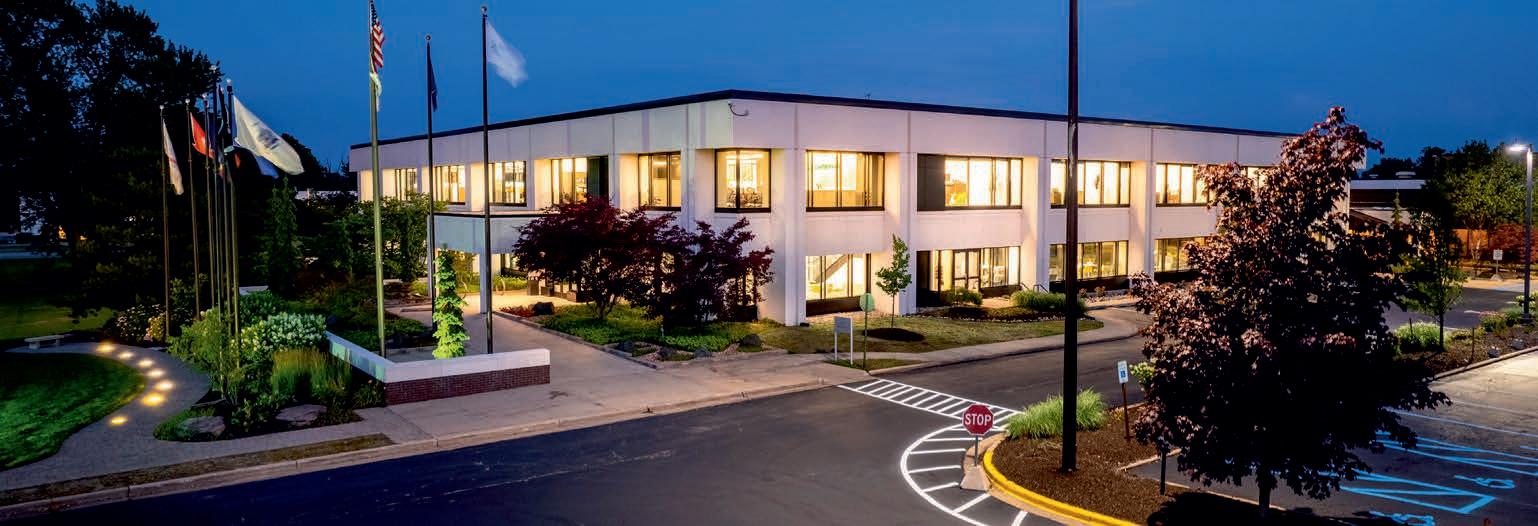
Chase & Co., we extended this program to 30 students, 10 of whom are Detroit Promise scholarship students. Similar work continues in a variety of industries as we partner with companies like Accenture, Deloitte, Henry Ford Health, Kelly, and Rocket Companies on everything from preparing recent graduates to enter the workforce to developing upskilling programs to help current employees earn the postsecondary credential needed to advance their career and earn a high-paying, in-demand job.
Michigan has had recent policy wins backed by business – namely, the creation of Michigan Reconnect and the Michigan Achievement Scholarships, making higher education more affordable. It’s time to double down on this work, leveraging the full weight of the business community.
We face a prospective workforce skeptical of the value of postsecondary education.
It’s going to take us all to overcome that misperception by building a culture of education and a talent pipeline where all Michiganders can see, seek, and achieve success.

In today’s knowledge economy, a state’s best asset is a skilled and well-educated labor force.
By that measure, Michigan is falling woefully short, business leaders and policymakers say. Only 31.5% of Michigan’s working-age population has at least a bachelor’s degree.
About 53% of Michigan’s high school Class of 2022 enrolled in college last fall, compared to the national average of 62%.
The state ranks 49th in community college completion rates, with only 27% earning an associate’s or finishing a certificate program within six years of starting school.
“As a state, we’re struggling,” said Jeff Donofrio, CEO of Business Leaders for Michigan.
It will take a variety of strategies to address the problem.
Give high schoolers a head start
“We need policies and practices that blur the lines between high school and post-secondary,” said Joel Vargas, a vice president for Jobs for the Future, a national nonprofit. “Right now, there’s this construct of high school and then college, and we know how many students we lose in that transition.
“So there are approaches which blend and blur those experiences, and there’s great data that show that’s the way we ought to be organizing education and training as a norm,” Vargas said.
Those approaches include programs such as dual enrollment, middle college and career-tech education.
In dual enrollment, the state pays tuition costs for high schoolers who enroll in college courses, helping teens to graduate from high school with a jump-start on college credits.
Middle college programs go a step further, allowing high schoolers to simultaneously earn a high school diploma and an associate degree, also with the state covering tuition costs.
Career-tech programs are typically offered through an intermediate school district, and provide hands-on high school classes tied to a specific job, such as welding or computer coding. Some classes allow students to earn a skills certificate or college credit.
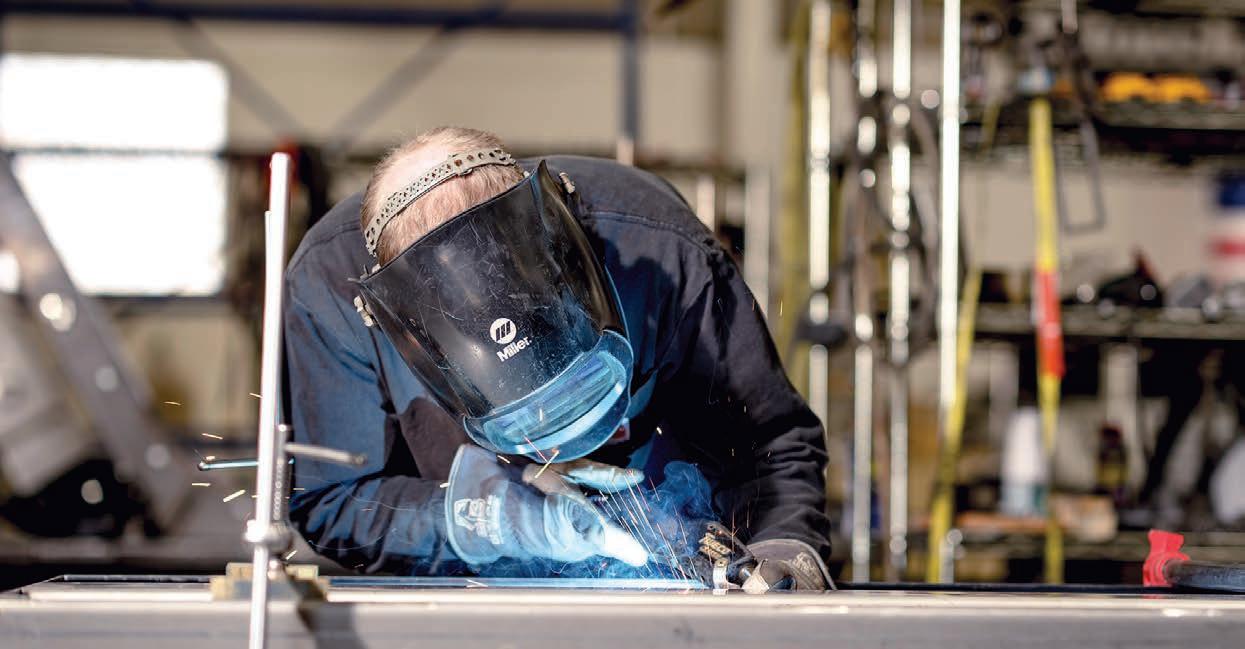
These are programs that “close off leaks, so that a student who has the skill and work ethic in ninth or 10th grade can see a clear pipeline through college and into a meaningful career in Michigan,” said Russell Kavalhuna, president of Henry Ford College in Dearborn.
For adults who lack a post-sec-
ondary credential, “there aren’t an enormous number of on-ramps to get back on that highway,” said Michael Rice, Michigan’s state superintendent.
Gov. Gretchen Whitmer wants to increase the current 50.5% of adults who have post-secondary training to 60% by 2030.
“It’s a huge issue for us,” said Sandy Baruah, CEO of the Detroit Regional Chamber of Commerce.
“There’s no way to reach that 60% goal without focusing on adults” already in the job market.
A logical approach, Baruah said, is targeting adults who already have some college credits but no degree. That’s roughly 1.2 million Michiganders, about 20% of the working-age population.
Baruah suggests that employers identify those workers and help them get over the finish line.
“It’s a cheap way to get additional skills in your company,” he said. “So part of that is, how do you help those employees get a degree? Is it flexible work schedules? Tuition reimbursement? There’s a lot of things you could do.”
Michigan Reconnect, a relatively new state program, covers community college tuition for adults 21 and older who lack a degree. Employers also could provide practical help in navigating the process of returning to school, which can feel overwhelming to many people.
Pine Rest Christian Mental Health Services, which is headquartered near Grand Rapids and employs about 2,000, is training its supervisors “to actually become kind of a professional development adviser for their employees,” and make those conversations part of performance reviews, said Bob Nykamp, Pine Rest chief operating officer.
“If a housekeeper wants to become a social worker, we’re going to help them with that,” he said.
Make ‘earn while they learn’ easier
Many people can’t afford to be out of the labor market as they go to school, especially if there’s no guarantee of a job, Vargas said.
“You need strategies where people can earn while they learn,” such as apprenticeships and internships, he said.
Faced with critical shortages in its clinical staff, Corewell Health now has full-time paid apprenticeships to train nurses, nursing assistants, medical assistants and pharmacy techs.
Another earn-while-you-learn strategy is “stacking credentials,” where people earn a credential for a job that pays the bills while they continue their education. For instance, someone can start out as a nurse’s aide, then a registered nurse and then, perhaps, a nurse practitioner.
For adults juggling school with job and family commitments, their education can get derailed for a variety of reasons – from a costly car repair that leaves them without transportation, to child care issues, to housing problems. Wraparound services help students navigate those hurdles.
That strategy has been a successful for Corewell Health in its apprenticeship programs, said Jan Harrington-Davis, senior vice president of talent attraction.
Corewell uses The Source, a Grand Rapids nonprofit, to provide caseworkers for students dealing with issues such as eviction, child care or transportation issues or other crisis.
Typically, the careworkers steer individuals to community resources, and can help with the application process, if needed.
The Source also has a fund for emergency grants. “It could be paying for a $150 tire repair that can keep them going to work,” said Alison Freas, its executive director.
“Particularly for individuals who are trying to up-skill, they’re typically coming from a lower-wage role where it can be really hard to get to the next step if you don’t have the personal safety net, the financial safety net or just somebody to talk to,” she said.
“That’s what we are, a trusted and knowledgeable resource to help people navigate through the noise so they can keep moving forward.”
Research shows that wraparound programs can more than pay for themselves. For The Source, the cost averages about $1,000 per client, Freas said, and the calculated benefit is about $3,600 per client for a company through better employee retention and lower absenteeism
“That’s over a 300% return on investment,” Freas said.
Many employers require a bachelor’s degree for white-collar jobs where a degree isn’t necessarily mandatory.
Vargas calls it the “paper ceiling,” and his organization is pushing skills-based hiring, in which employers evaluate candidates based on experience and proven skill sets vs. automatically screening out those who lack a degree.
“Because our labor market and education systems are so misaligned, you have this dynamic where employers are often apt to rely on bachelor’s degrees as signals of job readiness,” he said.
And that can limit upward mobility for those who have had less opportunity to pursue higher education, Vargas said, “so it’s really incumbent to call upon employers not to create more barriers for people who otherwise can do the job.”
“If employers have real precise talent needs that are going unfilled, help them connect with the talent factories that are higher education,” Kavalhuna said.
Brad Hershbein, an Upjohn economist, agreed. “There should be greater involvement of the business community” in solving the talent gap, he said. “But they’ve been burned, and I think are very reluctant to really partner with a lot of educational institutions because they approach it from very different cultural standpoints.”
That said, there are great examples of successful collaborations. Kavalhuna’s institution, Henry Ford College, already has a tight relationship with Ford Motor Co.
“We’re the one institution in the state where a person can get Ford’s own technical curriculum, from fixing vehicles in dealerships, to bodywork, to EV maintenance,” he said. “Students who come into this program get an associate’s and all the Ford-certified certificates and they have jobs waiting for them when they get done.”
Lansing Community College has a similar longtime relationship with General Motors Corp., said Steve Robinson, LCC president.
LCC also is partnering with Ultium Cells, which is building an electric vehicle battery in suburban Lansing, to train workers for that facility, Robinson said.






The nation continues to grapple with a labor shortage that has left nearly 10 million job openings unfilled. In Michigan, industries like health care, education and construction are all struggling to find skilled workers.

Unfortunately, employers may not find much relief in our current education and talent pipelines. Enrollment at community colleges, which have long served as a primary gateway to both the workforce and higher education, has fallen by 40% over the past decade. There are now 5 million young Americans between 16 and 24 who are neither in school nor working.
To address the challenge, several states are now embracing new kinds of models that blur the arbitrary line that divides high school, college and career training. This line has long acted as a barrier for too many learners. Together, such approaches are pointing to the need for the “Big Blur” — a restructuring of education for grades 11-14 to better meet the needs of young people after 10th grade and help prepare them to succeed in the world of work.
In Colorado, for example, policymakers have created a “Big Blur Taskforce” to help every high school student more easily access education and training that will lead to economic advancement. The group is exploring how best to streamline the state’s disparate credential attainment opportunities and ensure equitable access for students across the state. Already, Colorado appropriates $100 million per year to such efforts, with more than 40% of graduates at public high schools now participating in programs that support high school students in taking college-level courses for credit and ultimately earning a postsecondary degree.
A growing number of institutions and high schools in Colorado are also working together to offer concurrent enrollment opportunities, in which students can get a jump-start on specific degree programs. At Arapahoe Community College Sturm Collaboration Campus, for instance, nearby high school students can begin a program of study in business, health, math and sciences or technology, as well as participate in a range of pre-apprenticeship and apprenticeship programs.
Colorado is not alone in this effort. Here in Michigan, dozens of districts now offer early middle college programs, in which high schools and postsecondary partners provide students with the chance to graduate with not only
a high school diploma, but also an associate degree, 60 transferable college credits, a professional certification or a technical certificate. Students can also participate in a registered apprenticeship. The programs are having an impact: Students enrolled in the Early College Alliance at Eastern Michigan University, for example, graduate from college at a rate nearly 300% higher than students across the state. For Black students, that number is 700%.
Michigan and other states are leading the way in reimagining the connections between learning and careers. It’s past time we acknowledge that the arbitrary demarcations dividing our institutions and the workforce are rooted in an increasingly old-fashioned understanding of education and work. By blurring those lines — or erasing them altogether — we can better meet skilled labor demands and set more young people on a course for success.

Ranked by number of environmental lawyers employed in West Michigan
Practice group leader
Warner Norcross + Judd LLP
150 Ottawa Ave. NW, Suite 1500
Grand Rapids 49503 p (616) 752-2000 f 752-2500
wnj.com
Mika Meyers PLC
900 Monroe Ave. NW Grand Rapids 49503 p (616) 632-8000 f 632-8002
mikameyers.com
Foster Swift Collins & Smith PC
1700 East Beltline Ave. NE, Suite 200 Grand Rapids 49525 p (616) 726-2200 f 726-2299 fosterswift.com
Varnum LLP
333 Bridge St. NW Grand Rapids 49504 p (616) 336-6000 f 336-7000 varnumlaw.com
Dickinson Wright PLLC
200 Ottawa Ave. NW, Suite 1000 Grand Rapids 49503 p (616) 458-1300 f 670-6009 dickinsonwright.com
Rhoades McKee PC 55 Campau Ave. NW, Suite 300 Grand Rapids 49503 p (616) 235-3500 f 459-5102 rhoadesmckee.com
Daniel Ettinger
No. of W. Mich. environmental attorneys Major environmental clients Areas of expertise
15Dow, Eastman Chemical Company, Inc., LafargeHolcim, Lundin Eagle Mine, NextEra Energy, Inc., Perrigo, Pfizer Inc., Wolverine Power Supply Cooperative, Inc., Wolverine World Wide Inc.
State and federal permitting, compliance, and enforcement issues; legislative policy work; assistance with hazardous waste management, product content regulations, mine permitting and project development, renewable energy, NEPA and NHPA project reviews and compliance, contaminated site remediation (including PFAS), and brownfield redevelopment incentives
William A. Horn
8DND
Andrew Vredenburg7The Ponds Cooperative Homes Inc, De Saegher Dairy, Pitsch Wrecking Co., Edge Wood Dairy
General environmental counseling, environmental litigation, due diligence, environmental permitting and administrative proceedings, riparian rights disputes, oil and gas regulation, groundwater and surface water use, renewable energy development and permitting and natural resources extraction
Advises municipalities on contamination issues and assists clients in obtaining reimbursement of environmental response costs, regularly consults with municipalities on sewer service, industrial pretreatment, permitting issues, wetland and wind energy regulations
Air quality, land use permitting, due diligence and real estate development, regulatory compliance, waste management, water law, environmental and administrative enforcement
Environmental, energy and sustainability
Environmental due diligence, environmental cleanup projects, environmental permitting, environmental insurance claims, natural resource Issues, financing opportunities for contaminated properties, brownfield redevelopment Incentives, regulatory compliance
Crain's Grand Rapids Business list of top area environmental law firms, ranked by number of environmental lawyers employed in West Michigan, is the most comprehensive available. Crain's Grand Rapids Business defines "West Michigan" as Allegan, Kent, Ottawa and Muskegon counties. Crain's Grand Rapids Business surveyed 161 law firms; 7 responded and 6 are listed. To be considered for future lists, email danielle.nelson@crain.com. DND = did not disclose
Three large-scale Muskegon projects that are expected to create more than 700 housing units have secured $3 million in state brownfield funding.
The Michigan Department of Environment, Great Lakes and Energy (EGLE) announced Aug. 29 that it awarded the brownfield redevelopment funding to Adelaide Pointe, the former Shaw Walker building, and the Harbor 31 project.
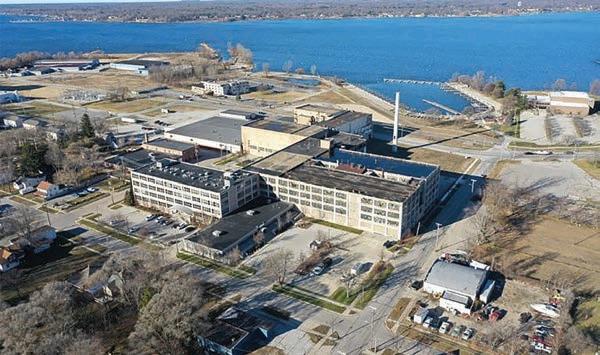
The developments are all being constructed on brownfield sites and are expected to generate a total of $355 million in private investment.
Parkland Properties plans to turn the blighted, 730,000-square-foot former Shaw Walker Furniture Co. industrial site into a mixed-use development with 552 condominium and apartment units, a parking ramp and 17,000 square feet of commercial space. The $220 million project is expected to draw $163 million in private investment.
“It’s a big project for the Midwest and it represents more housing units under one roof than have been built in Muskegon in probably the last 30 years,” Parkland Properties President Jon Rooks said.
The development team aims to begin cleanup and environmental site work this fall or winter and start
construction in 2024. The first phase of the project, which would include 376 apartments, is expected to open in summer 2025 if everything goes as planned, Rooks said.
The 15-acre site at 965 West Western Ave. and 920 and 930 Washington Ave., is contaminated with metals, petroleum compounds, solvents and cyanide.
EGLE awarded the project a $1 million redevelopment loan to conduct further site investigations and to install vapor mitigation systems, perform asbestos and lead paint abatement and remove wood block flooring. The developer expects site work covered by the EGLE loan to be finished by spring 2025.
“We have more than $2 million in contamination we’re looking to clean up on the site, so we’re planning to apply again next year for (EGLE brownfield funding) that’s available,” said Rory Charron, director of operations and real estate at Parkland Properties.
The project also received an $18 million allocation in the state’s fiscal year 2023-24 budget.
“(The budget allocation) was a big catalyst for this project and is enough to get us started for this first phase, together with the other tools we hope to achieve,” Rooks said.
The $250 million Adelaide Pointe project at 1204 West Western Ave.
that broke ground this summer will receive a $1 million EGLE Brownfield Redevelopment Grant to pay for the treatment of contaminated groundwater and the demolition of a concrete foundry at the site. The concrete will be recycled and used to build a new road for the project.
The site is located on the south shoreline of Muskegon Lake and previously housed a foundry from the early 1900s until 2015 that contaminated the soil with PFAS, metals, petroleum and solvent compounds.
Site plans for the project call for a 172-slip marina, 55-unit condominium building, multi-use retail, office, restaurant and event space, as well as public access to Muskegon Lake, bike trails, greenspace, a public fishing pier and a 125-room hotel. The developers expect the project to bring in $82.4 million in private investment and create 100 full-time jobs.
Muskegon residents Emily and Ryan Leestma are developing the project after purchasing several parcels of land along West Western Avenue for about $5.5 million in March 2021. Milwaukee, Wis.based Catalyst Construction is managing all of the build-out of Adelaide Pointe and the Hartshorn Village site. Edgewater Resources and Fishbeck Inc. are providing engineering and design of the project.
“(The brownfield grant) is a real-
ly big help, especially with all the other investment we’re doing on the site,” Ryan Leestma said.
The project is moving along at a steady clip, with construction crews working to finish the marina portion of the project and pouring pilings and foundation for the mixed-use building and condominium building, Leestma said.
Plans call for part of the condo building and the multi-use building, which will include offices, an event space, boat dealership and the revived Muskegon Brewing Co., to be complete by May or June of 2024, Leestma said.
The 31-acre Harbor 31 development at 650 Terrence St. along Muskegon Lake broke ground in August 2022, and is being developed by Harbor 31 LLC, which pur-
chased the lakeshore property in 2007. The $130 million project calls for apartments, single-family homes, an 85,000-square-foot senior living facility, a 107-room hotel, restaurant, retail space, a marina and boardwalk.
The project received a $1 million Brownfield Redevelopment Loan from EGLE that will pay for site assessments and the installation of a vapor mitigation system. Continental Motors and Teledyne built engines on the site from the early 1900s until 1991. A $2.3 million state appropriation in 2021 paid for the removal of contaminated soil and wetlands mitigation.
The city anticipates the redevelopment will create 154 new housing units, 250 new jobs and draw $110 million in capital investment.
Warner Norcross + Judd LLP
150 Ottawa Ave. NW, Suite 1500 Grand Rapids 49503
Phone: (616) 752-2000 f. 752-2500 wnj.com
Smith Haughey Rice & Roegge
100 Monroe Center NW Grand Rapids 49503 Phone: (616) 774-8000 f. 774-2461 shrr.com
Rhoades McKee PC
55 Campau Ave. NW, Suite 300 Grand Rapids 49503
Phone: (616) 235-3500 f. 459-5102 rhoadesmckee.com
Dickinson Wright PLLC 200 Ottawa Ave. NW, Suite 1000 Grand Rapids 49503 Phone: (616) 458-1300 f. 670-6009 dickinsonwright.com
Varnum LLP 333 Bridge St. NW Grand Rapids 49504 Phone: (616) 336-6000336-7000 varnumlaw.com
Mika Meyers PLC 900 Monroe Ave. NW Grand Rapids 49503 Phone: (616) 632-8000 f. 632-8002 mikameyers.com
Foster Swift Collins & Smith PC 1700 East Beltline Ave. NE, Suite 200 Grand Rapids 49525 Phone: (616) 726-2200 f. 726-2299 fosterswift.com
Miller Johnson 45 Ottawa Ave. SW, Suite 1100 Grand Rapids 49503 Phone: (616) 831-1700 f. 831-1701
Christian Meyer1931
Alticor Inc., Bronson Healthcare, Consumers Energy, Corewell Health, Dow, DTE, EJ Group, Gentex, Grand Action 2.0, Haworth, Meijer, NextEra Energy Resources, OutfrontMedia, PADNOS, SpartanNash, Western Michigan University, Whirlpool Corporation, Wolverine Worldwide
27,076Acquisitions and dispositions; condominiums; construction, development, including permitting and zoning; economic incentives; financing; foreclosures; leasing; oil, gas and mineral resources
Matthew Wikander Michael Doversberger
Scott
Leslee
2,030Buying and selling commercial real estate, financing transactions and land contracts, title examination and more
8,359Economic development incentives, green building and leasing, licensing and regulatory matters, and more
DNDReal estate, acquisitions and dispositions, construction, land use and economic development, leasing, real estate finance, real estate litigation
13,254Acquisitions and sales; land use development and zoning; financing; tax abatement; QOZs; brownfield financing and redevelopment, and more
4,336Purchase and sale agreements, leases for all types of properties, land contracts, easements and land use agreements
4,316Drafting and negotiating purchase agreements, construction contract negotiation and more
13,571Renewable
4,579
Daniel Hatch
Christopher Nyenhuis
Wheeler Upham PC 250 Monroe Ave. NW, Suite 100 Grand Rapids 49503 Phone: (616) 459-7100 f. 459-6366 wuattorneys.com
Honigman LLP 300 Ottawa Ave. NW, Suite 400 Grand Rapids 49503 Phone: (616) 649-1900 honigman.com
Kuiper Kraemer PC 180 Monroe Ave. NW, Suite 400 Grand Rapids 49503 Phone: (616) 454-3700 f. 454-0441 k2legal.com
Crain's Grand Rapids Business list of top area real estate law firms, ranked by number of real estate lawyers employed in West Michigan, is the most comprehensive available. Crain's Grand Rapids Business defines "West Michigan" as Allegan, Kent, Ottawa and Muskegon counties. Crain's Grand Rapids Business surveyed 161 law firms; 16 responded and 14 are listed. To be considered for future lists, email danielle.nelson@crain.com. DND = did not disclose










 Panel advances
Panel advances











By Kate Carlson
The city’s Brownfield Redevelopment Authority board approved a Transformational Brownfield Plan for the proposed $147 million Factory Yards mixeduse project on Grand Rapids’ southwest side. Metro Detroit-based developers Ben Smith, Scott Magaluk and Dennis Griffin are behind the massive redevelopment of the former industrial properties.
The project calls for the redevelopment of four vacant buildings at and around 655 Godfrey Ave. SW, as well as the construction of three new buildings. The project will span 15.5 acres currently hosting obsolete, vacant manufacturing buildings in Grand Rapids’ Roosevelt Park neighborhood.

“We’re just really excited about what we’ve been hearing and what (the developers) have been doing,” Reggie Smith, president of the Roosevelt Park Neighborhood Association, said during the Aug. 23 Grand Rapids Brownfield Redevelopment Authority meeting. “We’re excited that they’re willing to invest in our neighborhood.”
The Transformational Brownfield Plan is subject to approval by the Grand Rapids City Commission as well as the Michigan Strategic Fund board. Both bodies are expected to consider the proposal by October.
In addition to the $103 million that the developers expect to recapture from the Transformational Brownfield Plan, an additional $6 million would be recaptured for the project by the Local Brownfield Revolving Fund. Developers are also seeking nearly $10.2 million in incentives through the Obsolete Property Rehabilitation Act.
The state has approved three Transformational Brownfield Plans in Detroit and Vicksburg since the program was created in 2017. The powerful incentive tool lets developers apply to keep income and withholding taxes from people who work and live at certain sites associated with their project, along with sales taxes on construction materials and income taxes from construction crews on projects.

Gov. Gretchen Whitmer on July 18 signed changes to the transformational brownfield incentives into law that double caps within the program and expand the criteria for qualifying projects. While Factory Yards would not leverage any of the recent changes, Grand Action 2.0 plans to apply for transformational brownfield incentives for an outdoor amphitheater downtown.
When completed, Factory Yards will contain a total of 489,000 square feet of newly constructed and renovated buildings. Site plans call for:
w A total of 467 apartment units, 20% of which would be rented below market rate.
w A 22,000-square-foot food hall and event space with 11 vendors.
w 30,000 square feet of commercial office space, a 28,000-squarefoot fitness area, a 50,000-squarefoot self-storage facility, and 31,000 square feet of ground-floor commercial space.

w A boiler room on the property could also be repurposed into a brewery or distillery.

w An outdoor green space plaza, a 605-space surface parking lot and a parking ramp with 220 spaces.
Grand Rapids-based Wolverine Building Group is the general contractor on the project, and Norton Shores-based Concept Design Studio serves as the architect.


As part of an affordable housing agreement that the Brownfield Redevelopment Board recommended to the city commission, 20% of the Factory Yards apartments would be rented below market rate.

Our energy and environmental services are trusted far and wide – and for good reason.
you. mikameyers.com

The city of Grand Rapids has advanced a nearly $21.6 million brownfield plan for the first phase of a large mixed-use project planned at the former Display Pack building in the city’s Creston neighborhood.
The Grand Rapids Brownfield Redevelopment Authority approved the brownfield plan for the first phase of the RiverNorth project, which is being developed by Oak Brook, Ill.-based commercial real estate firm Franklin Partners. The development team announced plans for the 307,000-square-foot former manufacturing site in May at a Creston Neighborhood Association meeting.
The proposed site plan calls for demolishing the three existing buildings at 1340 Monroe Ave. NW and constructing two separate, four-story structures on the north and south ends of the site. Plans also call for a parking deck in the middle of the property between the two apartment buildings.
“We bought this with the intent of office redevelopment back in 2015, and obviously there has
also be included.
Eligible costs for the brownfield funding include demolition, lead and asbestos abatement and site preparation.
Wolverine Building Group is the general contractor for the project and Ghafari Associates is the architect.
The second phase of the project calls for a similarly designed building with about the same number of apartment units on the south end of the site.
The developer plans to apply for a brownfield amendment for the second phase of the project.
The Grand Rapids City Commission plans to consider the brownfield plan at its Oct. 10 meeting. Phase one is estimated to cost about $75 million.


Developers are also applying for a 15-year Neighborhood Enterprise Zone tax exemption for the project.
The RiverNorth project is located near two other multifamily projects in Creston, including a 72-unit project that broke ground in August at 220 Quimby St. NE, and a 110-unit project along Plainfield Avenue near the Grove Street intersection.

Sept. 18, 2023




3:30-6:30pm
been a series of changes with the pandemic of all sorts of things in our world,” said Ray Warner, partner at Franklin Partners. “This seems to be the best and highest use for our site. We’ve looked at this for a number of years now.”




Franklin Partners acquired the industrial property, which includes the 104-year-old Display Pack building, in 2015 for $7 million. Franklin Partners worked with several developers over the years that were unsuccessful at developing the site.
The brownfield plan approved Aug. 23 is only for the first phase of the project, which includes constructing a 226,500-squarefoot building on the north end of the site with 260 apartments and 1,818 square feet of retail space on the ground floor.
An adjacent 448-space, three-level parking deck would
“We bought this with the intent of office redevelopment back in 2015, and obviously there has been a series of changes with the pandemic of all sorts of things in our world.”
Ray Warner, partner at Franklin Partners
Production has resumed outside Ludington at the formerly shuttered Harsco Rail manufacturing facility because of a new customer contract, despite the company owner’s ongoing plans to divest the business.
Harsco Rail — a global supplier for railway track maintenance and construction and a division of Enviri Corp., formerly Harsco Corp. — reopened its plant and started the assembly process on May 1, company officials confirmed. The plant is located on South Jackson Road in Pere Marquette Charter Township, just outside the city of Ludington.
Madison Terefenko, external communications global lead for Enviri, said the decision to revisit operations in Ludington occurred in the second quarter of 2022 to fulfill a significant stoneblower contract for Network Rail, the largest infrastructure manager of railways in the U.K.
Harsco Rail’s Stoneblower is a railway track maintenance machine developed as an alternative
to traditional methods for restoring a track’s alignment.
Harsco Rail currently has 20 production employees working at the Ludington facility. The company began calling former employees in January 2023 to assist with readying the plant and returning to work.
According to Terefenko, the company aims to gradually scale up to nearly 60 employees — including new hires and workers returning to previous roles — as production ramps up toward full capacity slated for next year.
“We’re expected to have four machines in production by spring of 2024,” she said.
It is unclear whether the plant will remain open once the current contract with Network Rail is fulfilled.
“Right now, our priority is opening the plant and fulfilling the contract,” Terefenko said in a follow-up email to Crain’s Grand Rapids.
After operating in Michigan for nearly a century, the former Harsco Corp. in February 2019 announced the closure of its sole Michigan plant slated for April 1 of that year.
A Worker Adjustment and Retraining Notification (WARN) Act
filing at the time indicated permanent layoffs for up to 151 employees.
The closure was meant to consolidate and centralize all manufacturing operations and distribution into one facility near the company’s former West Columbia, S.C., headquarters. Eleven employees from the Ludington plant were being considered for open positions in South Carolina at the time, per the WARN notice in 2019.
“We have determined that there are numerous significant benefits for consolidating and centralizing all manufacturing operations and distribution into one manufacturing facility for North America Rail Equipment, which will be in Columbia, South Carolina,” the company said in a statement at the time. “This consolidation will enable our Rail Division to better serve our customers through enhanced production and distribution. At the same time, it will allow our Division to improve efficiencies and better utilize manufacturing capacity.”
The Harsco Rail division operates additional U.S. facilities in Fairmont, Minn., and Cherry Hill, N.J. Terefenko confirmed that no
changes will be made to those facilities at this time.
Outside the U.S., Harsco Rail has operations in the U.K., Australia, Brazil, Germany, China, India and Malaysia.
The rebrand from Harsco Corp. to Enviri Corp. was announced in June, along with the relocation of the company’s headquarters to Philadelphia. Founded by Corwill Jackson in Ludington in 1923, the company also formerly operated as Electric Tamper Equipment, Pandrol Jackson and Jackson Vibrators.
In November 2021, Enviri Corp. announced plans to explore strategic alternatives for the rail division beginning in the first half of 2022, with the intention to sell the business.
By November 2022, Enviri Chair-
man and CEO Nick Grasberger said in a statement on the company’s then-quarterly earnings that it “continues to manage the supply chain and inflationary impacts on a few large international contracts” for the rail division to help reduce economic risks and still facilitate a potential sale.
In early April of this year, the company announced that Harsco Rail had secured a separate fiveyear, $130 million stoneblower operation and maintenance contract with Network Rail.
The company reported its latest quarterly earnings on Aug. 2, showing revenues of $520 million, an 8% increase from the same period a year ago as company officials indicated progress with the ongoing plan for the rail division.

Fox Motors adds second area Kia dealership
e Dan DeVos-owned Fox Motors acquired the store at 4575 Plain eld Ave. NE in Plain eld Township from Alabama-based Leichty Auto Group and renamed it as Fox Kia North.
Fox Motors President and COO
Diane Maher said the Kia brand is “on the rise,” performing well for the dealership group and proving itself to be a “manufacturer to watch,” which contributed to the company wanting to complement its existing Fox Kia store at 4141 28th St. SE in Kentwood.
“It’s preferable that we are the ones that are chosen to represent the brand in both locations versus an outside competitor operating without the same kind of integrity that we would,” Maher said.
Nationally, sales of Kia vehicles reached 394,333 units through June of this year, up 18.3% compared to the same period in 2022, according to data from Automotive News, which is owned by Crain
Communications. For the rolling 12-month period that ended June 30, sales were up 15%.
While the previous owners had recently updated the Plain eld Avenue store to the newest Kia brand standards, Maher said the dealership’s service department is undersized and will likely see some updates in coming years.
“ e facility’s in really good shape,” Maher said. “Really, the only thing that we need to gure out is the service department. It feels undersized for the amount of units in operation in this town now.”
e acquisition was handled inhouse by an internal legal and accounting team for Fox Motors. Terms of the deal were not disclosed.
Fox Kia North’s operations will be led by John Phillips, general manager of the nearby Fox Chrysler Dodge Jeep RAM on Plain eld Avenue, who will now oversee both campuses.
e deal marks the fourth time the store has traded in the last eight years, according to an analysis by Crain’s Grand Rapids Business. e store started as Keller Kia and was located adjacent to the former Keller Ford location in Walker. e Keller family sold the dealership in

2015 to Ohio businessman Bill Doraty, who relocated the store to its current location and renamed it Kia of North Grand Rapids.
Doraty then sold o the business in 2017 to Auburn Hills-based Summit Automotive Management Inc. State record lings show Liechty Auto Group acquired the business in 2021.
“We are con dent that Fox Motors will continue to operate the dealership in the best way possible and we have no doubt that our employees and customers will be in good hands,” E. Scott Anderson, vice president and COO of Liechty Auto Group, said in a statement.
With the deal, Fox Motors now employs 2,175 people and operates 45 locations in Michigan and Illinois that sell 47 vehicle and powersports brands. e company ranked 55th on the latest Automotive News Top 150 Dealership Groups list with new vehicle sales of 14,457 units in 2022 and annual revenues of nearly $1.49 billion.
Previously, the company in July opened a Reed City used car dealership known as Fox Ford PreOwned and Service Center. Fox Motors also acquired three dealerships and a collision center in metro Detroit in March in a deal that

added Buick-GMC, Subaru and Isuzu Commercial Truck locations.
According to Maher, changes in technology and rising interest in electric vehicles (EV) are creating volatility in the automotive retail industry, making this a strategic time for Fox to look to invest in dealerships.
“OEMs are making their dealers invest in a lot of expensive things if they want to keep going. I think that gives people pause,” Maher said.
She added that the industry remains at a “transitional point” as dealerships tackle the shift to EVs and have to face major investment decisions, which is leading to con-
solidation as some owners look to sell their operations.
To that end, the top 150 operators tracked by Automotive News owned 23.3% of all U.S. dealerships as of last year, up from 22.7% in 2021.
“We have millions and millions of dollars that have to go into EV investments with all of our dealerships,” she said. “It’s not for the faint of heart.”
Despite the busy year, Maher said the dealership group remains in acquisition mode and is looking at a few deals currently.

“If something ts, we try to stretch for it because it doesn’t come up again,” she said.
SHANE NAPPER, COO and President of Construction, has been an instrumental leader at Rockford for over 25 years and is a graduate of Ferris State University.
Traditionally considered one of the least innovative industries, construction now stands at a crossroads. Aging buildings and infrastructure, combined with new ways of living, working, learning and healing, demand a transformation that will reshape the ways we build and create. Our team at Ro ford is focused on the future of construction — a future that embraces innovation, collaboration and sustainable growth.
Our industry has always been one that thrives on tenacity, precision, and cra smanship. From towering skyscrapers to beautiful interiors, our sector has created the spaces that de ne our people and our culture. However, this new era demands we adapt, evolve and revolutionize our approa to work.

Te nology will continue to be a key driver. New te nologies and design advancements can help optimize resource allocation and project timelines. Virtual design and Building Information Modeling (BIM) allow us to qui ly create and analyze space “virtually”, trouble-shooting issues before construction begins. e results are higher levels of accuracy, sustainability and e ciency, and we are able to build faster and more cost e ectively.
But the heart of our industry has always been its people — the skilled and dedicated professionals who bring structures to life. Construction, like many other industries, is facing a labor crisis. In addition, we are ghting decades-old stereotypes that construction o ers low-paid, undervalued and unstable “jobs” in a male-dominated world. Our industry must allenge these inaccurate perceptions, and attract a larger, more diverse workforce that is fully equipped with te nology, training and critical thinking skills. We will create inclusive work environments and jobsites where all people feel they belong, and we will demonstrate career paths that support a great quality of life.
In addition, collaboration will continue to be a cornerstone of construction’s evolution. Ar itects, engineers, contractors, skilled trades and te nology specialists must work together to nd the best solutions. Ea bring unique perspectives that help us ta le design,

function and constructability allenges to deliver the highest level of beauty and value to our clients.
Finally, the future of work in construction is tied to the stewardship of all our resources — people, planet and pro t. e imperative to build responsibly and sustainably drives us to embrace eco-friendly materials, energy-e cient designs and renewable energy sources. On behalf of our clients and our communities, we must continue to conserve critically important resources, like the water we so value in our Great Lakes state.
As we stand on the brink of this industry’s transformation, it is important to remember that the future of work in the construction industry is not just a collection of trends, te nologies and tools — it is a testament to our resilience, ingenuity and steadfast commitment to progress. Just as we have constructed marvels that defy gravity, we must now build a future that de es boundaries. By embracing te nology, nurturing our workforce, fostering collaboration and ampioning sustainability, we can begin a journey of unprecedented possibilities — one that exceeds our clients’ expectations and propels our communities forward.
Society is currently somewhere around the fourthdate phase of its relationship with generative artificial intelligence: still infatuated, but beginning to sober up enough to acknowledge that the object of our affections may not prove to be entirely worthy of our trust. All but the most ardent of enthusiasts have realized we can’t take for granted that AI applications tell us the truth.
ChatGPT unblushingly delivers fact and fiction with equal gusto in response to our queries. The prevailing description of these flights of fancy is “hallucination” — an anthropomorphizing term that implies the app truly desires to be honest with us, but is inadvertently held back by an occasional schizophrenic break with reality.
This is dangerously misleading vocabulary. Of course, to speak of AI as if it is something more personal than the complex interaction of 1s and 0s is our first mistake. AI programs act intelligently, if by that we mean “able to adapt.” The very thing that sets AI apart from garden-variety software is its ability to adapt in response to accumulated feedback. We call these processes “machine learning” or “deep learning,” and the more advanced AI designs are known as “neural nets” — all terms patterned after the way human minds operate.
But these terms are more analogical than accurate. AI is not — cannot be — “intelligent” in the same way a human brain is, because software lacks a mind. Merriam Webster more thoroughly defines “intelligence” as “the skilled use of
reason” and “the ability to apply knowledge ... or to think abstractly.” Machines can do none of this. If an AI program generates data that happens to correspond to reality, that is the happy result of its human coder’s effort. These programmers are like civil engineers who design a complex array of subterranean pipes precisely enough to ensure that water flows only to the desired location. But an AI program does not know it is telling the truth any more than a pipe knows it is delivering water correctly, because it has no mind with which to ascertain what reality is.
At least AI cannot lie to us. A liar is one who recognizes the truth and chooses to deceive the listener into believing something different. AI cannot “know” the truth, so it cannot lie.

But neither can it “hallucinate.” To hallucinate is still to perceive a reality, just not the actual one. So if we’re going to continue speaking of AI in anthropomorphized terms, we should at least be more precise. Lulling ourselves into a mistaken understanding of how the software functions sets us up to misunderstand both its limitations and its true potential utilities. To that end, I propose that the most accurate way to describe the output of generative AI programs is — to use the abbreviate” — “BS.”
I’m serious. In a 2005 book that became his most popular publication, philosopher Harry G. Frankfurt set out to define this oft-used but ill-understood term. Titled “On Bullsh*t,” the book posits that “the essence of [BS] is not that it is false but that it is phony.” Unlike a liar, who is actively “at-
tempting to lead us away from a correct apprehension of reality,” the BS artist “does not care whether the things he says describe reality correctly. He just picks them out, or makes them up, to suit his purpose.”
That describes ChatGPT’s conversations with us. The only difference between a chatbot and a human BS artist is that the person does it intentionally. AI has no intention. But that just cements the description. As Frankfurt says, “[BS] is unavoidable whenever circumstances require someone to talk without knowing what he is talking about.” Since ChatGPT cannot know what it is talking about, it cannot say anything other than BS.
This is easiest to see in the context of a chatbot, but the same principle applies to all manifestations of AI. Humans relying
on AI-generated information as if it were reliable advice have already caused disastrous outcomes in numerous industries. AI-powered tools will be useful for an increasingly broad array of applications that inform and assist human decision-making, but they must always be wielded by humans exercising independent judgment. AI solutions must be implemented within guardrails restrictive enough to ensure that the program’s final output is sufficiently likely to correlate to reality as to be useful (after human-led review and revision) for its intended purpose. The acceptable parameters will vary by context. But to the extent we allow ourselves or our businesses to uncritically rely on generative AI as a source of truth rather than the sometimes-useful BS that it is, we will come to regret it.


Legislation pending in Lansing takes a direct shot at independent contractors, aiming to limit self-employment options, freelance work and more — hurting the very workers lawmakers say they’re aiming to help.
The “problem” the bill seeks to define is ill-defined, especially because Michigan already has an effective test and standards for determining who can and can’t be classified as an independent contractor.
It’s becoming increasingly clear that the interests of unions — not workers — are driving the decision-making here. Unions are OK with disrupting the independent contractor and gig economy and forcing virtually all workers into traditional employment arrangements if it creates another avenue to union organizing and fill-
ing their coffers.
That’s unsettling, especially given the harmful impact the bill will have on job providers and the workers we rely on, from sales, real estate and medical professionals to truck drivers and ride-share providers, hairdressers, freelance writers and designers, to construction, accounting and legal professionals to an array of gig workers and more. Even lawmakers will feel the impact of this bill, as their campaign teams are often made up of independent contractors.
California, which adopted similar legislation in 2019, had to pass an emergency measure less than a year later, ultimately exempting more than 100 professions. Voters added more exemptions in a 59%-41% ballot measure. And another clean-up bill is now being
considered to exempt even more professions.
The Michigan proposal contains no exemptions. And even if it did, it seems ill-advised to follow California’s example, which has proven messy, prolonged and controversial — putting workers’ livelihoods in limbo and increasing costs.
Ultimately, it’s workers and entrepreneurs who would lose the most under this proposal. If the Legislature forces more individuals into a strict, traditional employment model, individuals lose control over how, where and when they work and carry out their duties. And it diminishes opportunities to start a business, take on a side hustle or take on multiple jobs to maximize income.
All stakeholders — policymakers, regulators, employers, unions and others — should band together to help businesses understand how to best comply with cur-
rent law, inform workers on their rights and crack down on bad actors. But they should also partner to protect independent work arrangements that fully comply with the law, provide maximum worker flexibility and mutually benefit those involved.
Michigan lawmakers need to rethink
whether they want to force all workers into a century-old employment model in the name of driving up unionization rates. We’d urge them to walk away from this misguided effort, sending a signal that they support workers and their ability to pick the path that’s right for them.
It’s becoming increasingly clear that the interests of unions — not workers — are driving the decision-making here.
A new state grant program is offering farms and food processors $30 million in total funding to upgrade their wastewater treatment infrastructure and help them comply with environmental regulations.
The new Michigan Department of Agriculture and Rural Development (MDARD) grant offers farmers, food processors, breweries and other food-related businesses an opportunity to apply for up to $2 million in funding.
The Wastewater Infrastructure Fund (WIF) aims to help companies meet wastewater regulations from the Department of Environment, Great Lakes and Energy’s (EGLE) under its Groundwater Discharge Permit Program.
According to MDARD Agriculture Development Division Director Jamie Zmitko-Somers, the grant is intended to help offset costs for companies that may need to complete upgrades to their facilities to meet groundwater discharge permit requirements, as well as businesses that have identified areas in need of improvement.
Eligible investments include equipment, site review work, engineering design, pre-work sampling and analysis, installation and labor, and construction materials.
According to Zmitko-Somers, rural organizations stand to benefit from the grant, as they may lack the access to infrastructure that urban and suburban communities have.
“A lot of these processing facilities are in rural communities, and the disadvantage for them is they do not have municipal waste systems that they can send their waste to where it’s treated,” Zmitko-Somer said. “We’re really look-
ing to help these firms that don’t have that ability to connect into a municipal system and need to deal with their wastewater on site and ensure that it’s as clean as possible before it’s being land applied.”
While in its infancy, the new funding program has drawn praise from business groups, who believe it will help bridge the gap for many companies around the state.
“Without hyperbole, there is nothing more consequential for water quality in Michigan than addressing waste water from its farms and food processors,” said Daniel Schoonmaker, executive director of Grand Rapids-based West Michigan Sustainable Business Forum.
“People talk about the impacts of CAFOs (combined agriculture feeding operations) and emerging concerns about greenhouse gas emissions, (but) the more documented and consistent issue is with the challenges of these facilities to meet wastewater discharge standards.”
According to Schoonmaker, wastewater issues are “well-documented, (but) not necessarily well-understood,” particularly in West Michigan. He pointed to algal blooms in Lake Erie as tangible examples of the effects of agricultural runoff, but added: “On our side of the state, it’s not as conspicuous.”
“This is an issue that is chronic and recurring,” Schoonmaker said. “If (the state) were to put $30 million into this every year, it would be money well spent.”
While the grant will be beneficial for farms and food processors, which have to handle the effects of heavy nutrient loads, animal waste and fertilizer in their waste, the Wastewater Infrastructure Fund program also may be of particular interest to Michigan’s breweries.
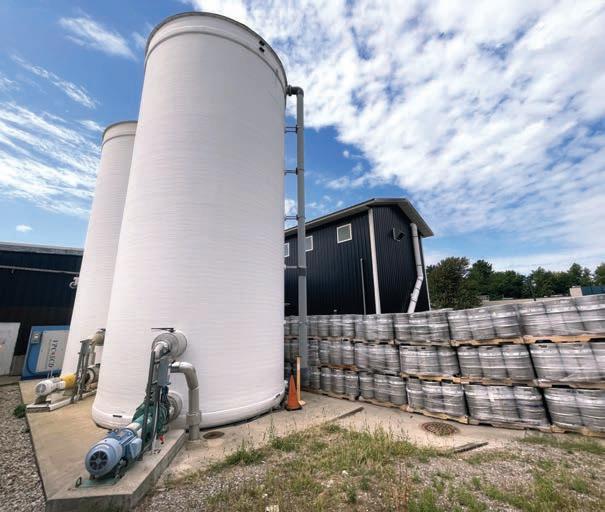
“It takes three to six glasses of water to make every glass of beer and that creates a substantial wastewater flow,” Schoonmaker said. “For the last decade or so, the brewing industry in West Michigan and across the state has scaled up. Wastewater has been one of the more significant barriers in that industry.”
To that end, the Brewers Association trade group estimates that around 70% of a brewery’s production water intake will be discharged as effluent, or wastewater that
came an issue for Short’s Brewing’s production facility in Elk Rapids when the company was informed that its effluent exceeded the capacity of its local municipal sewage treatment facilities. At the time, when Short’s was producing around 20,000 barrels of beer annually, it was contributing more than 90% of the wastewater that Elk Rapids treated.
he said.
flows into a sewage system.
“Wastewater is one of the biggest issues for breweries, especially to scale,” said Scott Newman-Bale, CEO of Short’s Brewing Co. LLC, adding that the new MDARD grant will likely help breweries expand their wastewater treatment capacity as their operations grow.
In 2013, wastewater handling be-
In response, Short’s Brewing diverted wastewater to other municipalities for treatment while it established its own water treatment facility, which came online in 2015 at a cost of $2 million, according to COO Tyler Glaze. The facility holds about 100,000 gallons of liquid wastewater, which it cleans through an aerobic system before sending it to another plant for further treatment.
Short’s Brewing’s monthly bill for handling wastewater costs is in the tens of thousands of dollars,
Glaze estimates that Short’s produces around four and a half gallons of wastewater per gallon of beer, just above the industry target of 3 gallons per gallon of beer. While he said Short’s does “really well” with its wastewater ratio, smaller breweries without the same treatment capacity could produce 10 to 20 gallons of wastewater per gallon of beer.
“I think a lot of breweries that could take advantage of this (new grant program) are smaller breweries in a rural area, which there’s more and more of now,” Glaze said. “We were three and a half times smaller when we got a letter saying we had to stop producing beer or fix something. We were not prepared at the time. I think a lot of breweries have been in that position. If we had a grant like this at the time, I would’ve jumped on it.”
ru brand has done well for the dealer group. He said he “jumped at the chance” to make a deal for Rohrman’s two stores, both of which are in major Indiana cities.
Zeigler Automotive Group has added two new locations to its Indiana footprint in a two-store deal with Rohrman Automotive Group.
The acquisitions included Lafayette, Ind.-based Bob Rohrman Subaru and Bob Rohrman Subaru of Fort Wayne, which have been renamed Zeigler Subaru of Lafayette and Zeigler Subaru of Fort Wayne, respectively.
The deal, which closed Aug. 14, marks the 40th and 41st stores Kalamazoo-based Zeigler Automotive has added to its growing portfolio. It also expands Zeigler Automotive to four Subaru stores, in addition to locations in Merrillville, Ind., and Kenosha, Wis.

Zeigler Automotive Group President Aaron Zeigler said the Suba-
The Lafayette store is located only minutes from Subaru of America’s only U.S. assembly plant and sits on 10.5 acres in a building of approximately 43,000 square feet. The location is one of the largest Subaru retailers in the country, offering new and used vehicles and maintenance on-site.
Zeigler plans to invest in “dramatic upgrades” at the Fort Wayne location in the next year. Early plans call for expanding the dealership’s 14,000-square-foot facility by about 10,000 square feet by 2024 and bringing it up to brand design standards, Zeigler said.
“We’re going to add on to both service and sales,” he said. “We need a lot more room to do what we want to do there.”
The Indiana purchases continue Zeigler Automotive’s acquisition streak this summer. Last
month, Zeigler acquired four stores in the Holland area, including the Nissan, GMC, Hyundai and Kia brands, all of which had been previously owned by Elhart Automotive.
Subaru corporate approached Zeigler Automotive with the potential acquisition, Zeigler said. While the Southwest Michi-
gan-based automotive group doesn’t currently have any more acquisitions in the deal pipeline, Zeigler said the company is “always in acquisition mode, based on the right opportunities.”
Zeigler Automotive Group currently owns 82 franchises across 41 locations in Wisconsin, Illinois, Michigan and Indiana. The busi-
ness, founded in 1975, employs over 2,400 and generated an estimated $2.2 billion in revenues for 2022.
Terms of the deal were not disclosed.
Indianapolis-based Stoll Keenon Ogden PLLC served as legal counsel for Rohrman Auto Group in the deal, while Fort Lauderdale, Fla.-based dealership investment banking firm Haig Partners LLC served as an adviser.
According to the most recent data available from Haig Partners, private buyers acquired 80 stores in the first quarter of 2023, a decline of 27% from a year ago. The company expects M&A to remain busy through the remainder of this year, but at levels below the pace of 2022.
“This sale underscores the continued demand for strategic acquisitions driven by motivated buyers looking for top-tier franchises in excellent markets,” Kevin Nill, managing director at Haig Partners, said in a statement.
the two Subaru stores are located in Fort Wayne and Lafayette
By Abby PoirierThe newly renamed Zeigler Subaru of Lafayette in Lafayette, Ind. COUrteSY pHOtO
“Without hyperbole, there is nothing more consequential for water quality in Michigan than addressing waste water from its farms and food processors.”
Daniel Schoonmaker, executive director of Grand Rapidsbased West Michigan Sustainable Business Forum
property as amphitheater construction starts next spring, Berens said.
The first set of city services will relocate from the 201 Market site to an interim location in May 2024, and city officials expect operations to be fully off the property in November 2024, Berens said.
The city approved a $2.2 million contract at the end of March with Bergmann Associates Inc. to create a site plan for the city to move operations from Market Avenue to 1500 Scribner Ave. NW on the
From Page 1
Roundtable participants mostly reported to lawmakers that their businesses are struggling and are in need of more resources.
Brinks noted that Michigan currently has the most diverse group of majority lawmakers in the state’s history. She also told the business owners that she is working to “bring the voices that have not been heard to the table,” a sentiment echoed by Fitzgerald.
“Our job is building chairs at the table for you all to join us. … Your perspective is what drives Michigan’s policy forward,” Fitzgerald said.
Angel Cruz, partner and principal consultant at Aztech.us, said many of the clients his software
From Page 1
After the proposal failed to make it into a final budget plan that legislators adopted this summer, VanderWall crafted the legislation to create an insulin production program to “ensure that residents of this state have access to affordable generic or biosimilar forms of long-acting insulin and other insulin medications,” according to language in the bill, which is co-sponsored by five Republicans and one Democrat.
VanderWall said he views the high cost of insulin as a public health issue. The high cost has forced many diabetes patients who rely on insulin to control and manage their disease to either ration or skip doses.
“We know that many, many people, they just can’t afford it, so either they do a half a dose a day so that they can stretch it for two months or in some cases people are just not using it at all and in the long run your health goes down,” he said.
“This is an opportunity for us to move forward and deliver a life-saving product that is affordable to all,” he said. “We look forward to a great conversation and, hopefully, a law being passed that gives Michigan citizens an opportunity to see real savings when it comes to insulin.”
If the state can partner with a producer to significantly reduce the costs, that could result in lower costs overall for the health care sys-
city’s north side. The city also is now working with Clark Construction Co., which is authorized to do pre-construction services and put early bid packages together for the relocation, Berens said.
The city anticipates closing in September on 1500 Scribner Ave. NW, which previously housed Kent County Road Commission offices and facilities. The Grand Rapids City Commission approved an amended option agreement in 2021 for the city to purchase the Scribner property from Kent County by Sept. 30, 2023, for $7.45 million, which remains on track. The road commission recently opened
company works with in the Hispanic community are not pricing their products and services high enough. This is part of a bigger information access problem that greatly affects Latino business owners, Cruz said.
“If there is information and resources they need for their business online, it’s not translated well,” Cruz said.
Cruz said he has been able to partner with bigger companies to grow his business, but that is not the case for many Latino-owned companies in the area.
Even if there is some information translated to Spanish, many Latino business owners are fluent in certain dialects, Cruz said.
Several business owners at the roundtable event also said it is difficult to access required licensing ex-
tem and give diabetics a greater ability to afford the insulin needed to manage their condition, according to VanderWall.
“We’re just going to see better outcomes in health in the state of Michigan for all citizens that can use this product because they won’t need to ration it because of costs,” he said.
H.B. 4890 would direct the Michigan Strategic Fund to issue a request for proposals for a producer to develop and open a production facility in the state to make and distribute an FDA-approved insulin. The Michigan Strategic Fund could offer a grant of up to $150 million to support establishing a production facility in the state.
A private-sector producer would make and sell state-branded insulin without rebates through pharmacy benefit managers. If a producer cannot meet that provision, the state would distribute insulin on behalf of the contracted producer.
The state would own the real property where the insulin facilities are based. A private contractor the state selects would operate and maintain the facility.
VanderWall said he has met with two generic insulin producers based outside of Michigan that he describes as “very, very interested and willing to work toward doing what we have to do to be a state that wants to be a leader.” Both expect to secure U.S. Food and Drug Administration approval this year to produce a generic form of insulin, he said, declining to name the companies.
The focus on lowering the costs of
its new location at 1900 Four Mile Road NW at the WalkerView Industrial Park in Walker.
Meanwhile, the Grand Rapids-Kent County Convention/Arena Authority (CAA) also has a $24.3 million option agreement with the city to purchase the 201 Market property. The CAA and the city have agreed to allow construction work to start on the site before the property deed is officially transferred, Berens said.
The CAA agreed to allocate $5 million in reserve funds to eventually be counted toward the purchase of 201 Market. This allocation would be reflected in a budget
ams and tests in many industries.
Brinks agreed this is an ongoing issue, and said she has been working to get more industries in the state to offer licensing exams in Spanish.
“We have not been able to get a law passed that would require this of every department, but I think there might be a way for us to think about it differently and be more targeted with a pilot program with a specific industry and see how it goes and make the case,” Brinks said. “We could start to think more creatively about that because this has been a problem forever.”
Angelica Velasquez, owner of La Casa de la Cobija clothing store on South Division Avenue in Grand Rapids, said many of the Latino-owned businesses in the area struggle to get financing from banks even if they have been estab-
insulin comes as a recent Citizens Research Council of Michigan report on the health of the state’s population noted that Michigan’s diabetes incidence rate in 2020 was 12.3%, versus 10.6% across the entire U.S. and 10.5% in neighboring states.
Gov. Whitmer’s October 2022 executive order cited that the cost for insulin has increased 600% over the last decade. The executive order called the high price of insulin “egregiously” unsustainable and directed state agencies “to explore how Michigan can deliver insulin at a lower cost to Michiganders.”
In a statement emailed to Crain’s Grand Rapids Business, the governor’s press secretary, Stacey LaRouche, said that Whitmer “constantly hears from Michiganders who are forced to make impossible decisions between medication, food, rent, and other bills. That’s why she is committed to lowering the cost of prescription drugs, especially insulin.”
“The governor will work with anyone to lower costs of prescription drugs for Michiganders, and she looks forward to doing more work in this space,” LaRouche said.
Introduced July 18 during the Legislature’s summer recess, H.B. 4890 was referred to the House Health Policy Committee, where VanderWall serves as minority vice chair. He expects the committee to begin legislative hearings on H.B. 4890 in late September and thinks the bill will generate plenty of debate.
Language written into the bill concludes that “the cost of insulin medications, particularly long-acting insulin, has risen to an unac-
amendment the CAA board of directors will consider in October.
Rich MacKeigan, regional manager of ASM Global, which manages multiple venues in downtown Grand Rapids owned by the CAA, said the design process and fundraising progress “continues to look good for the amphitheater.”
The lead donor for the amphitheater will be announced in September, which will move the plan “from an idea to a project,” MacKeigan told the CAA board Aug. 25.
As the anticipated spring 2024 groundbreaking for the amphitheater nears, the CAA needs to take on a more active role in the am-
lished in the community for years.
Velasquez, who serves as the president of the Burton Heights Business Association, also shared that many business owners — many of whom are Hispanic or Latino — along the South Division corridor have safety concerns and want to see more policing and public safety resources deployed in the area.
The disorderly conduct and public nuisance ordinances recently passed by the Grand Rapids City Commission have compounded the issue by pushing the downtown homeless population to South Division, Velasquez added.
“The city needs to have programs for people they have left on the streets, not just push them,” Velasquez said. “There is no plan.”
While helping to solve the city’s homelessness issue isn’t a focus of
ceptable level, and that this increase has resulted in reduced access to life-sustaining medications for many residents of this state with diabetes.”
The bill’s language notes that an insulin production program “is a public purpose and of paramount concern in the interest of the health, safety, and general welfare of the residents of this state.”
VanderWall pegs the chances of getting H.B. 4890 passed and signed into law as “really good,” given the governor’s prior proposal. He and other backers have been in regular contact with the governor’s office on the issue, he said.
“It’s going to be an interesting conversation as we move forward,” said VanderWall, a conservative Republican who ordinarily rejects government intervention into or competition with the private sector.
He emphasizes that the public-private strategic partnership the bill envisions would only enable and assist an insulin producer to come to Michigan.
“I look at the big picture, and the big picture is that the state of Michigan isn’t going to be the producer. We’re helping bring this product into the state. We’re not in there with state employees brewing a batch of insulin,” he said. “We’re actually being the ones to say, ‘Hey, we’re willing to take this on. We’re willing to pitch in and help you build a facility here. You run it, the state holds the rights to this so that we can pass it on to our citizens at a much better savings and really be the leader in positive health outcomes.’”
phitheater as well as a proposed soccer stadium that Grand Action 2.0 is also leading, said CAA Chairperson Richard Winn.
Winn proposed the formation of a CAA development committee that would include himself, along with Grand Rapids Mayor Rosalynn Bliss and Birgit Klohs, who serves as the building committee co-chair for the amphitheater and formerly led The Right Place Inc.
“The CAA needs to take a bigger role and actually at some point the lead role and Grand Action 2.0 will back off, as they did with the arena and DeVos Place projects,” Winn said.
the West Michigan Hispanic Chamber, the policy change is another example of how the city’s Hispanic population is not involved in the decision-making process, said Guillermo Cisneros, president and CEO of the chamber.
Part of the West Michigan Hispanic Chamber’s strategy to gain more access to resources and decision making in local government is to establish a new Grand Rapids headquarters with the help of a $5 million state budget allocation.
The chamber is in the process of acquiring and renovating a 17,000-square-foot former manufacturing building and turning it into a community gathering space to better connect Latino business owners, and to connect them with opportunities throughout the rest of the city, Cisneros said.
The federal Inflation Reduction Act that Congress passed and President Joe Biden signed in 2022 capped the out-of-pocket costs for insulin for people on Medicare at $35 for a month’s supply. Similar legislation to implement consumer price caps has been introduced in Michigan and other states.
In reaction to the federal law, a trio of pharmaceutical companies this year also said they plan to voluntarily reduce list prices for insulin and cap out-of-pocket consumer costs.
A November 2021 World Health Organization report noted that the three pharmaceutical companies — Indianapolis-based Eli Lily & Co., Denmark’s Novo Nordisk and France-based Sanofi S.A. — dominate the non-competitive global insulin market. The companies “have considerable market power on pricing, supply and demand,” according to the WHO report.
That kind of concentrated market control has led to efforts to cap consumer out-of-pocket costs and, in the case of CivicaRx in the U.S., work to increase supply. Backed by U.S. investors, including Michigan-based Corewell Health, Trinity Health and Blue Cross Blue Shield of Michigan, the nonprofit CivicaRx expects to begin producing three versions of insulin by early 2024 at a new facility in Petersburg, Va. CivicaRx, which California selected in March to produce a biosimilar form of insulin for the state after a $50 million investment, promises to sell its insulin for no more than $35 per vial, and up to $55 for a box of five injectable pens.
potential buyers. We are getting some positive responses and are working hard to secure a buyer,” Miller said. “Our priority is to find a buyer and continue the operations, and we think that’s a high likelihood that we will.
“We want to see the company continue to operate and provide opportunity in the community.”
Former third-generation owner Amy Proos sold Proos Manufacturing in 2018 to President Bryan Howard, who joined the company in 2015 as general manager.
Howard no longer serves as CEO, according to Miller.
In the fall of 2020, Chicago-based private investment firm Westbourne Capital Partners acquired a majority stake through a strategic investment in Proos Manufactur-
ing, which specializes in designing and manufacturing material handling solutions.
Westbourne Capital invested in the company alongside Samson Investment Partners, which is based in New York and Dallas, in addition to a group of additional family offices. The investment aimed to support Proos Manufacturing’s rapid growth in domestic and international e-commerce fulfillment.
The difficulty for the company began after it experienced “very rapid” growth in the first half of 2022 by providing material handling equipment to e-commerce companies nationally, Miller said. The company’s fortunes changed in mid-2022 when e-commerce experienced a downturn, he said.
“They were caught up in it,” Miller said. “It’s not anything the company did. It was the market.”
Proos Manufacturing’s business in the e-commerce industry has
since begun to rebound and should pick up further in 2024, he said. Prior to the downturn, the company employed 106 people.
Miller’s optimism for finding a buyer stems from Proos Manufacturing having a “strong management team and they have very
ficient working capital to remain in business and that a receivership is the most appropriate method” to pursue.
strong relationships with their customers,” he said.
The initial July court filing seeking the appointment of a receiver notes that First Merchants had “been advised that Proos Manufacturing’s business does not have suf-
Lacking an immediate appointment of a receiver to take possession and control of the collateral behind the debt, First Merchants Bank would have had “no effective and/or efficient means to insure that the collateral is preserved, protected, and maintained and the appointment of a receiver is also necessary to preserve, protect, and maintain First Merchants’ interests in the collateral” backing the loan, attorneys for the bank wrote in the July court filing.
As Cascade Partners pursues a sale of the company, the receiver has asked the court to reject a lease for a 131,650-square-foot facility on 60th Street SE in Wyoming that the
company vacated prior to receivership. The receiver also seeks to break a sublease to a supply chain management company for 21,900 square feet of space within the facility.
Proos Manufacturing paid $85,000 a month to lease the facility, which it moved into in early 2022 and now “has no use for,” an attorney for the receiver wrote in a court motion asking to vacate the lease.
“The receiver has concluded, in the exercise of its business judgment, that there is no need to continue occupying the leased premises and that the lease provides no benefit to the receivership estate,” according to court documents.
The receiver also has asked the court to reject Howard’s employment contract with the company, saying it’s “burdensome to the receiver estate” and is “no longer needed.”
Request Foods, which Abel said generates about $500 million in annual revenue, spun out of Bil Mar Foods in 1988 after that business was sold to Sara Lee Corp. and has steadily expanded over the years. The proposed expansion marked an important inflection point for the company, which co-manufactures food products for national brands and private label customers.
In the two years since the projects were announced, Request Foods has invested about $125 million to $150 million to open the new cold storage facility and the new ready-to-eat foods production facility and to finish upgrades to its wastewater facility.
The company has put the Greenly Street plant expansion on hold as it rethinks its investment.
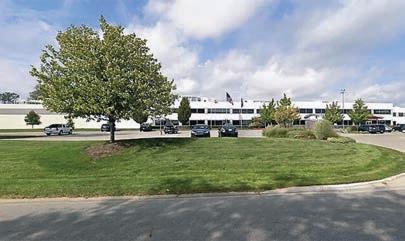
Jeremy Webb, managing director of business development projects for Michigan Economic Development Corp., said in an Aug. 22 me-
From page 3
From page 3 attached garage and another three-space detached garage.
Inside, the first floor features full-length windows and doors with a formal dining room straight ahead. To the right on the main level, the kitchen is outfitted with oversized islands with luxury appliances, custom cabinets, a woodfired pizza oven and a grill room. A spacious first-floor great room attached to the kitchen features a fireplace, and there’s another sitting room flanked by two bathrooms to the right of the foyer.
On the left side, there’s a second family room with a fireplace, an office, screened porch and lounge — all accessible to a patio, which has a built-in fire pit overlooking lush grassy hills that roll down to the lakeshore.
The upstairs features a primary suite with a lounge, balcony and ensuite bathroom with double
dia briefing that the company has faced “a number of unforeseen and unavoidable challenges and setbacks” that have affected its ability to meet the requirements in the original agreement with the MSF.
The initial incentives package included a $2 million performance-based Michigan Business Development Program grant along with a $6.9 million Community Development Block Grant (CDBG) through Holland Township. The company was also approved for a 50% Alternative State Essential Services Assessment Exemption (ASESA) for up to five years, valued at $1.6 million.
The Michigan Strategic Fund board last month approved several amendments to Request Foods’ initial incentives package, including extending the company’s State Essential Services Assessment (SESA) Exemption from five to 15 years and increasing the exemption from 50% to 100%.
The MSF also scaled back the anticipated Eligible Personal Property (EPP) investment from $98.8 million to $32.7 million, changes that
sinks. The second floor also has a loft overlooking the foyer, an office, laundry room, four other bedrooms and eight bathrooms. One of the baths adjoining a smaller bedroom contains a floor-to-ceiling bump-out window box with the bathtub, so occupants can see the lake while they wash up.
The full walkout basement features an indoor pool and lounge, home theater with planetarium-style lighting, indoor gym, recreation room with a fireplace, wine vault, additional kitchen, two half-baths, a second laundry room and several storage closets.
The entire home is accessible by elevator.
The Reeds Lake mansion gained notoriety in the mid-2000s under the ownership of Stokes, who was convicted in 2007 of 31 counts of health care fraud at his Grand Rapids and Greenville practices.
Request Foods hopes will help the company “invest smart” during market challenges, according to Abel.
“We’ll continue to invest those dollars,” she said. “It may not be in exactly the same areas that we initially thought, but we are committed to continuing on (our) trajectory. Request has always invested significantly over its 30-year history, and that’s not going to end.” While the pandemic created a boost in demand for ready-to-eat meals as consumers stayed in-
The home became a symbol for Stokes’ opulent lifestyle while his practices as a doctor risked the safety of his patients. The home was also the subject of lawsuits, as contractors alleged Stokes failed to pay them for the work they completed on the mansion, as media reports chronicled at the time.
According to past reports, Stokes faced charges for billing insurance companies for $2 million worth of medical procedures he did not perform, scaring patients into believing they had pre-cancerous conditions so he could perform surgeries they didn’t need, reusing medical supplies and disregarding sterilization procedures.
His medical license was subsequently revoked, and he was sentenced to 10.5 years in prison in late 2007, a sentence that was reduced by six months in 2010 after an appeal.
Crain’s was unable to find any current information about Stokes.
doors, people are back eating at restaurants and less focused on making meals at home.
That shifted Request Foods’ business from about 75% retail and 25% food service to more in the range of 70% to 30%, according to Abel.
Retail was “the segment that we were really poised to support with a lot of this expansion,” Abel said.
So far, Request Foods has filled only about half of the 200 positions it committed to creating as part of the nearly $9 million in state incentives it received for the project.
“And it’s not only factory jobs. We’re struggling to even fill office (and) salaried positions,” Abel said. “It’s a million-dollar question: What happened to all the people post-COVID?”
Abel said the company remains committed to its original projections for job creation. To keep up
with immediate needs, Request Foods is supporting its production with workers on temporary H-2B visas, a labor program that allows nonimmigrant workers to fulfill temporary non-agricultural positions in the U.S. While the company currently has 1,031 full-time employees, it has added 75 temporary H-2B workers to keep up with production.
“We have 100 open positions right now that we would love to fill,” Abel said. “(Labor) is a big piece of pausing our expansion efforts.”
Other challenges Request Foods has experienced include unexpected inflation as machinery, transportation and construction costs have all risen since the project was announced. With these factors in mind, the company is shifting its investment from retail to bulk production to reflect the changing market.
“What happened in the economy in the last year and a half has been radical and it has been swift since COVID,” Abel said. “I don’t think that anyone could have really predicted that.”
Oerlikon HRSflow USA, LLC seeks a
FT R&D and Product Quality Improvement Specialist in Byron Center, MI to ensre anlysis & monitor’g all issues affct’g prdct rliablty & custmer suppt effctvness. Must have USMS or frgn equiv in Indus Engg, Mech Engg, Electrical/Electronics Engg, Aerosp Engg, or clsly rel engg fld + 4 yrs exp as R&D Eng or rel pos. 40% Travel Required throughout North America.
E-mail resumes to tammy.lewis@oerlikon.com or mail resumes to Oerlikon HRSflow USA, LLC, ATTN: Tammy Lewis, 920 74th Street, Byron Center, MI 49315.
Requirements:
l At least two years’ experience in sales or service enhancing the customer experience
l Experience using 2D & 3D design tools such as SolidWorks, AutoCAD and inventor
l Relevant experience analyzing data to determine best-fit solution for the end customer.
l Proficiency in Microsoft Excel, PowerPoint, and Outlook.
l Bachelors Degree, or equivalent engineering industry experience in automation or equipment.
If you are interested in the role, please visit www.tomra.com/careers
“We want to see the company continue to operate and provide opportunity in the community.”
Ronald Miller,managing director of the restructuring group at Cascade Partners’ Grand Rapids office
Tanya Gibbs, a descendant of the Little Traverse Bay Bands of Odawa Indians, has a front-row seat in helping tribes in Michigan and across the country set themselves up for success in diversifying their economies. The managing partner in the Grand Rapids of ce of majority Native-owned Rosette LLP law rm, Gibbs believes in starting tribes down the path of diversi cation with a keen focus on the fundamentals, beginning with good corporate governance. “I love talking about it — everyone probably thinks I’m crazy,” she said with a laugh, acknowledging that corporate governance is far from the sexiest legal topic. “But truly, when you have that governance set up in a systematic way that everybody understands, it just makes business function way easier than anything else.” Her practice focuses on helping tribes navigate non-gaming investments, whether through real estate development, hospitality, commercial business development or the nancial services industry, to name a few of the more common types of investments. As well, Gibbs since 2015 has served as president of the board of her tribe’s Odawa Economic Development Management Inc. (OEDMI), which is helping to transform the former Victories Casino in Petoskey into a mixed-use development on a shoestring budget. She credits her involvement in OEDMI for giving her personal experience she can relate to her clients. Gibbs spoke with Crain’s Grand Rapids Business about her role in advising tribal clients on non-gaming issues, the common challenges tribes face when doing business with non-Natives, and how misconceptions about Indian Country affect the dealmaking process. |
 By Joe Boomgaard
By Joe Boomgaard
How do you use your position as an adviser to help tribes adopt best practices and set them up for success in economic development?
A lot of it is a focus on good corporate governance. e Harvard Project on American Indian Economic Development many, many years ago told us all to separate business from politics, and that’s much easier said than done. It also looks very di erently depending on what community you’re in. When tribes are looking at establishing some kind of economic enterprise, (it’s a question of): How best do we separate business from politics while also maintaining good transparency among all the parties so that there’s trust and con dence on both sides?
e bene t of working here at Rosette is we work with so many di erent tribes all over the country. All of them are unique, but a lot of them are happy to share. You can share the good and the bad.
Why is economic diversi cation so important for tribes?
Tribes, generally speaking, know that they need to diversify because everyone understands that they don’t want to put all their eggs in the gaming basket, and that they probably need to be looking at other things, especially as the gaming industry changes. e di cult part for tribes if they’re just starting out thinking about non-gaming economic diversi cation is (asking): What do we actually do? … ere’s a thousand di erent things that tribes can do. Depending on that particular tribe, they may have certain advantages for some types of businesses or disadvantages depending on where they’re geographically located. Each one has unique circumstances.
What’s your advice to tribes that are facing those decisions?
It’s never my job to tell the tribe, ‘Oh, you should get into X business,’ but it’s trying to encourage them to develop some kind of strategy based on their speci c community, their speci c corporate governance and their speci c goals. What do they really want to see out of economic development? en they can start to narrow the universe of potential business opportunities into things that actually will make sense and hopefully be successful because they make sense for their particular set of circumstances.
What misconceptions about doing business in Indian Country would you like to break?
A lot of my daily frustration is with the banking industry,
and sort of access to capital as a larger issue, because I am constantly educating banks and folks that might be bringing capital to Indian Country on some really basic stu . A lot of times, those folks don’t take the time to even do a simple Google search. If you Google a tribe’s name, you can see their website. A lot of tribes have their laws posted online. … It’d be nice if people would take that rst step to at least try to familiarize themselves with just the structure of the tribe and then ask questions they may have about some of the nuances.
It has to be frustrating when people think it’s Indian Country’s responsibility to educate them from square one, even though they’re going
to bene t from the business relationship. It’s just exhausting. A component of that, speci cally as it relates to development on trust land, is what I’m going to call the white savior complex. It’s like they want to come do business within the tribe’s jurisdiction on tribal land, but their purpose is just to gure out how to rip the tribe o .
In Indian Country, Native people want to do business with people who we like and people who we trust and in a way where the relationship is mutually bene cial. A lot of times, we get non-Native folks coming into Indian Country and it’s a one-way street and they’re not there to create a mutually bene cial arrangement. ey’re just trying to take advantage, and that certainly is not OK.
How can that ignorance about tribes muddy the waters of a business deal? Folks always want to bring the tribal government into a transaction … in the form of a guarantee, like a loan guarantee. ey need special approvals from the tribal government in some way. But that’s not always the case, especially in the non-gaming world. If a tribal EDC is trying to nance some acquisition, in my opinion, the bank should underwrite it like they would any other acquisition: based on the EDC’s nancial capabilities, based on the target company’s nancials and diligence information that’s been gathered.
(Requiring) some kind of guarantee from the tribal government … just doesn’t make sense and can be very frustrating because they don’t necessarily understand that there is this separation of business and politics, or at least there should be. e more successful the tribe is at separating its business from politics, the less likely they probably need any tribal support on any of that stu , too.
CrainsGrandRapids.com
President and CEO KC Crain
Group publisher Jim Kirk, (312) 397-5503 or jkirk@crain.com
Executive editor Mickey Ciokajlo, mickey.ciokajlo@crain.com
Editor Joe Boomgaard, joe.boomgaard@crain.com
Managing editor Andy Balaskovitz, andy.balaskovitz@crain.com
Special projects editor Tim Gortsema, tim.gortsema@crain.com
Director of audience and engagement Elizabeth Couch, elizabeth.couch@crain.com
Audience engagement editor Matthew Pollock, matthew.pollock@crain.com
Creative director Thomas J. Linden, tlinden@crain.com

Associate crative director Karen Freese Zane
Digital design editor Jason McGregor
Art directors
Kayla Byler, Carolyn McClain, Joanna Metzger
Senior digital news designer Stephanie Swearngin
Notables coordinator Ashley Maahs
REPORTERS
Kate Carlson, real estate, kate.carlson@crain.com
Jack Grieve, audience engagement, jack.grieve@crain.com
Abby Poirier, restaurants, retail and agribusiness, abigail.poirier@crain.com
Mark Sanchez, health care and nance, mark.sanchez@crain.com
Kayleigh Van Wyk, manufacturing, technology and law, kayleigh.vanwyk@crain.com
Rachel Watson, residential real estate, insurance and tourism, rachel.watson@crain.com
Danielle Nelson, research and data, danielle.nelson@crain.com
ADVERTISING
Senior vice president of sales
Susan Jacobs, susan.jacobs@crain.com
Advertising & event sales director
Jill May, jill.may@crain.com
Account executive
Shelly Keel, shelly.keel@crain.com
Michigan events director
Samantha Flowers, samantha. owers@crain.com
Marketing and events coordinator
Matthew Chaffee, matthew.chaffee@crain.com
People on the Move manager
Debora Stein, dstein@crain.com
Classi ed sales
Suzanne Janik, sjanik@crain.com
Sales assistant Rachel Smith
Inside sales Tawni Sharp
CRAIN’S CONTENT STUDIO
Senior director of Crain’s Content Studio Kristin Bull, kbull@crain.com
Crain’s Content Studio manager Clare Pfeiffer
Content marketing specialist Allie Jacobs
PRODUCTION
Vice president, product Kevin Skaggs
Product manager Tim Simpson
Prepress/production director Simone Pryce
CUSTOMER SERVICE
(833) 830-7446 toll free (845) 267-3031 local line (for any foreign calls) customerservice@crainsgrandrapids.com
Crain’s Grand Rapids Business is published by Crain Communications Inc.
Chairman Keith E. Crain
Vice chairman Mary Kay Crain
President and CEO KC Crain
Senior executive VP Chris Crain
Chief Financial Of cer Robert Recchia
G.D. Crain Jr. Founder (1885-1973)
Mrs. G.D. Crain Jr. Chairman (1911-1996)
Editorial & Business Of ces
1155 Gratiot Ave., Detroit MI 48207-2732; (313) 446-6000
Volume 40, Number 16
Crain’s Grand Rapids Business (ISSN 2836-7723) is published biweekly, with an extra issue in May, October and December, by Crain Communications Inc. at 1155 Gratiot Ave., Detroit, MI 48207-2732. Periodical postage paid at Grand Rapids, Michigan.
© Entire contents copyright 2023 by Crain Communications Inc. All rights reserved. Reproduction or use of editorial content in any manner without permission is prohibited.
Subscriptions: $59 per year. Advertising rates and speci cations at www.crainsgrandrapids.com or by request. Crain’s Grand Rapids Business does not accept unsolicited contributions.
Postmaster: Send address changes to Crain’s Grand Rapids Business, 1155 Gratiot Ave., Detroit, MI 48207-2732.



















